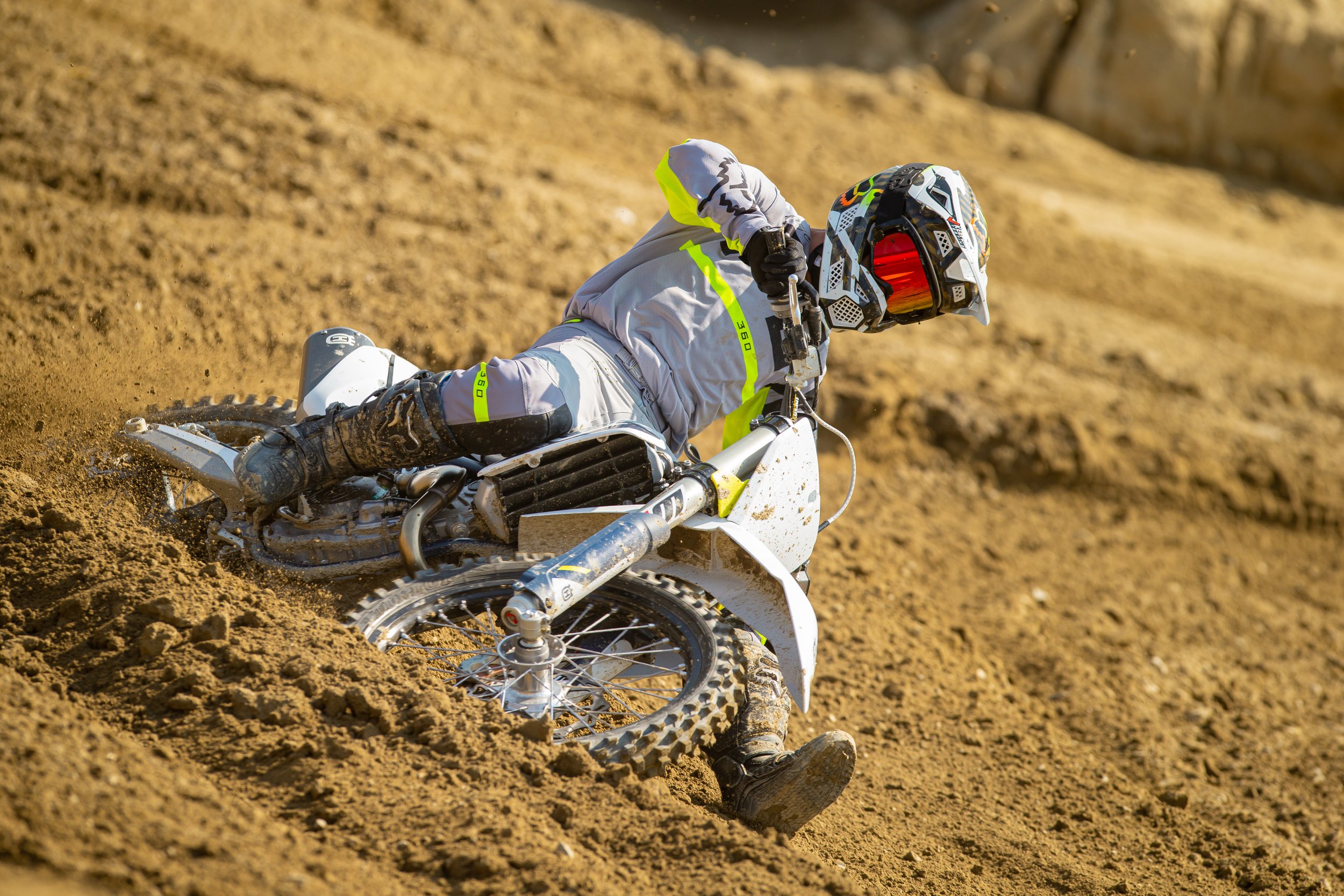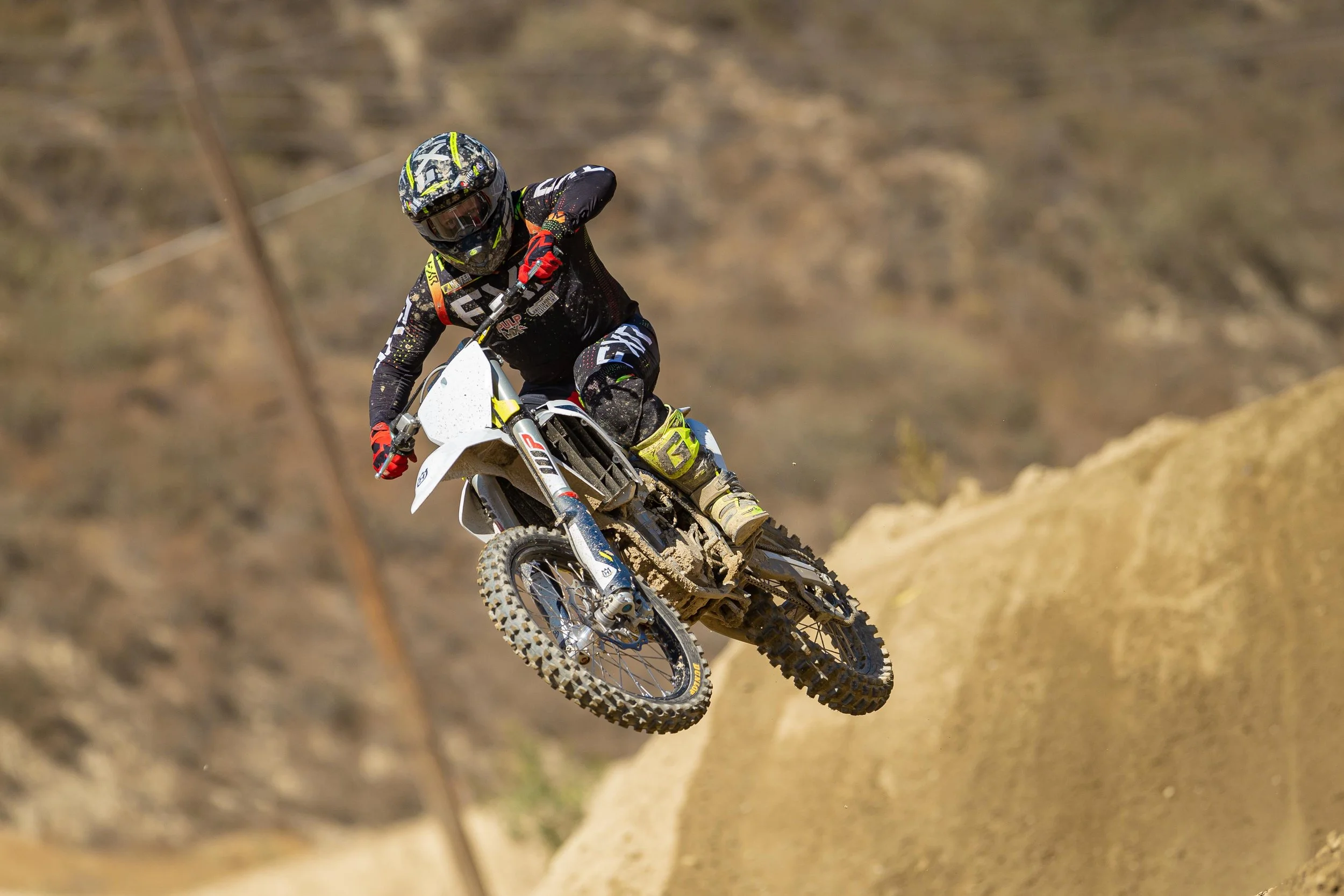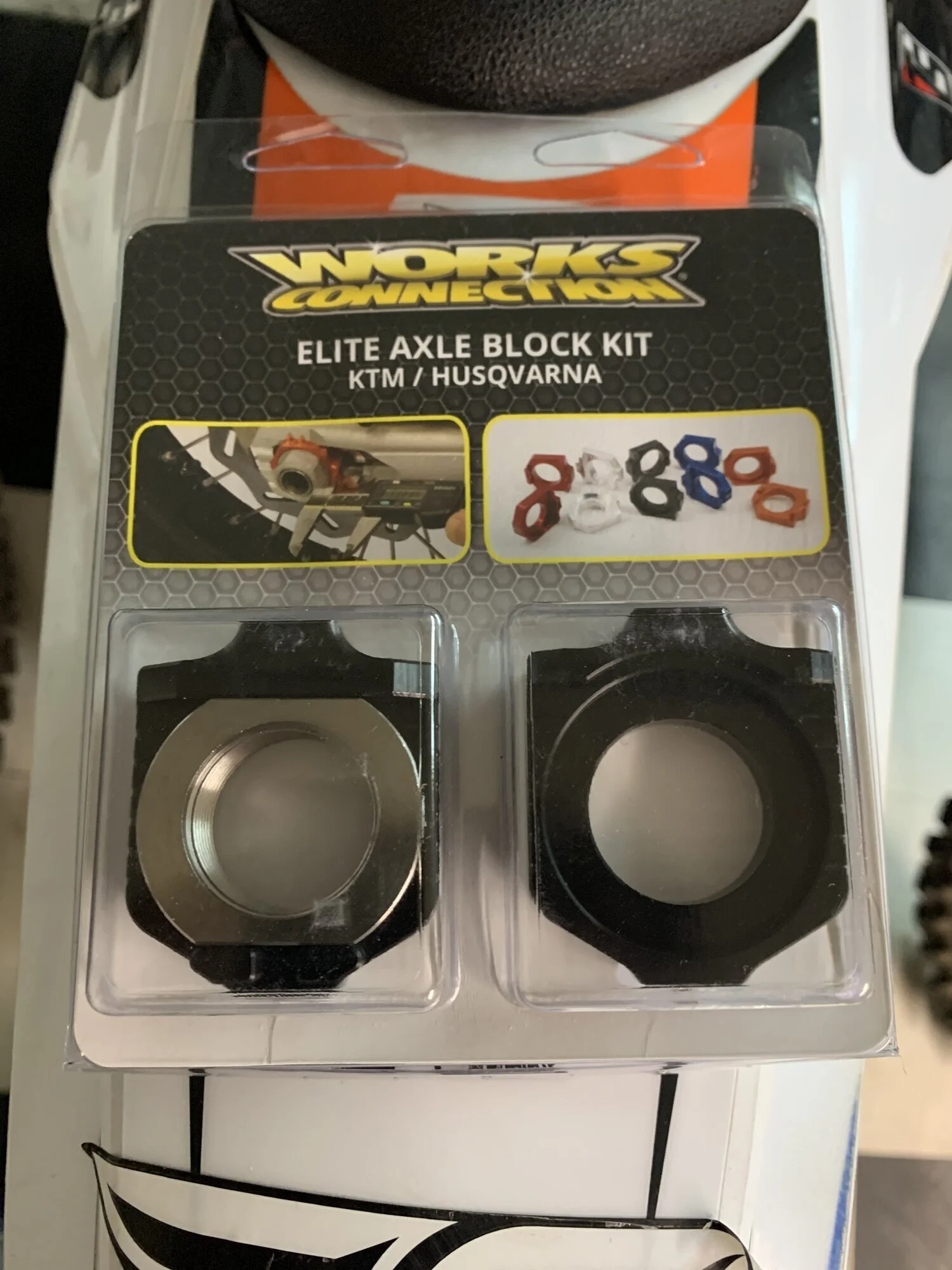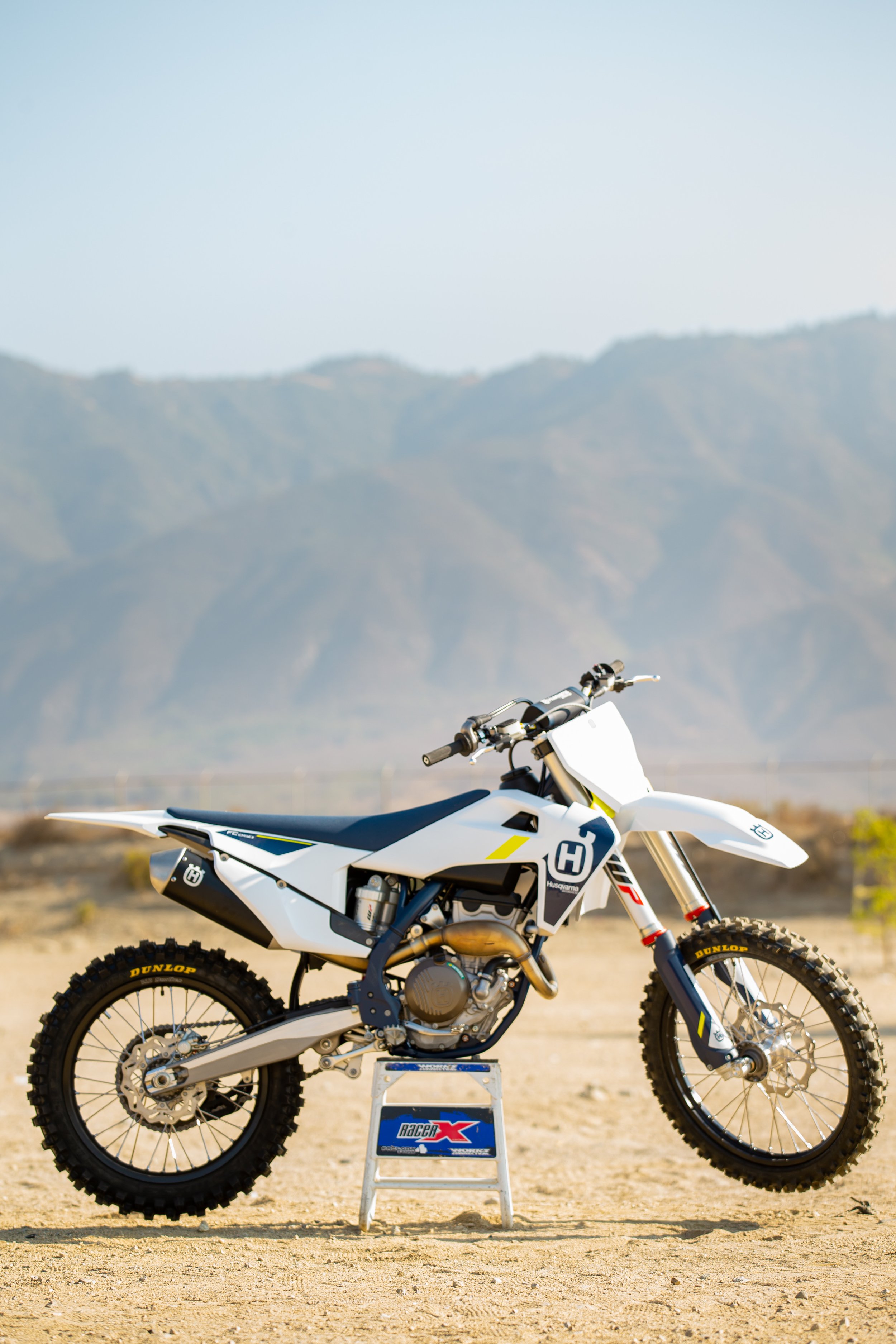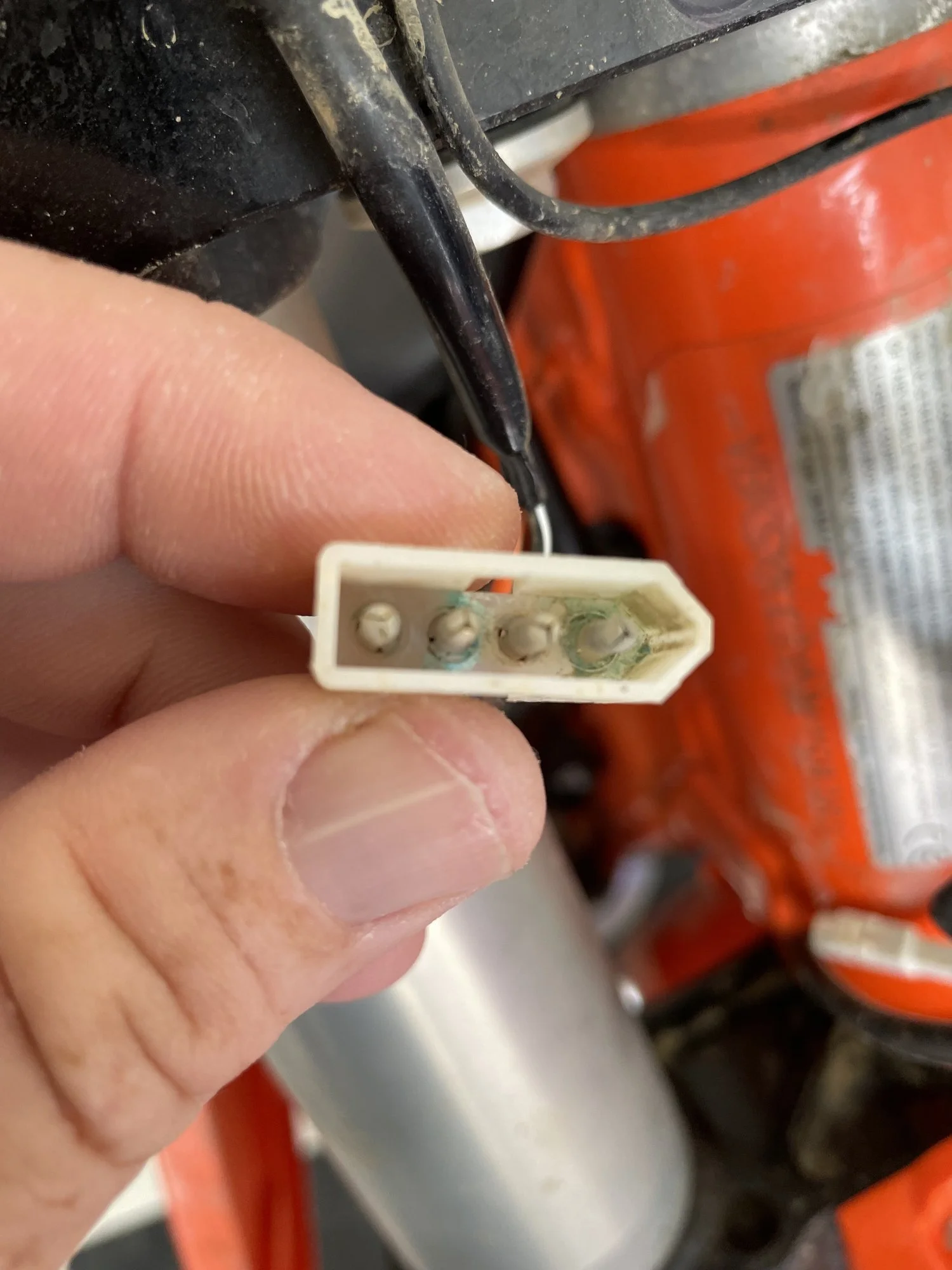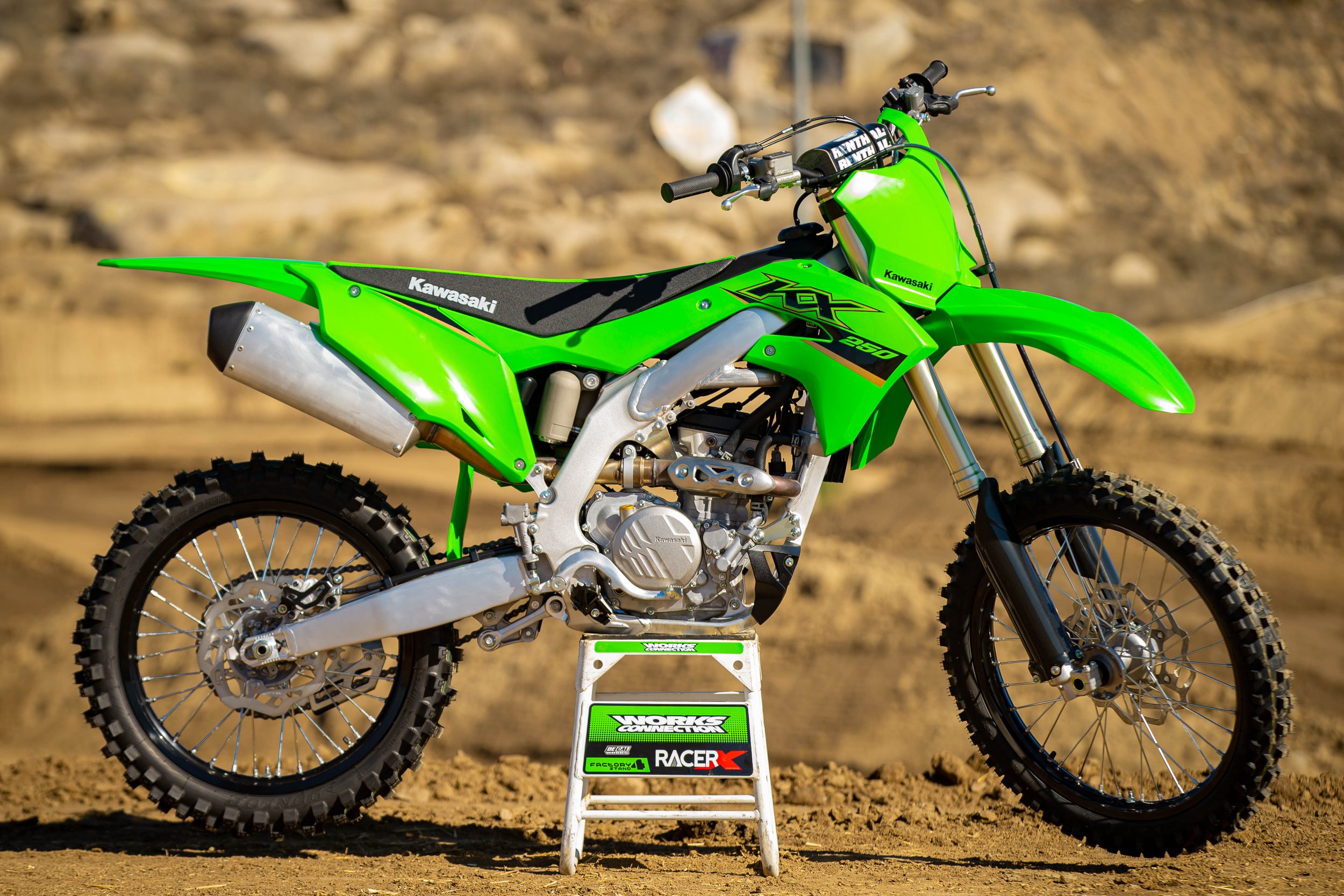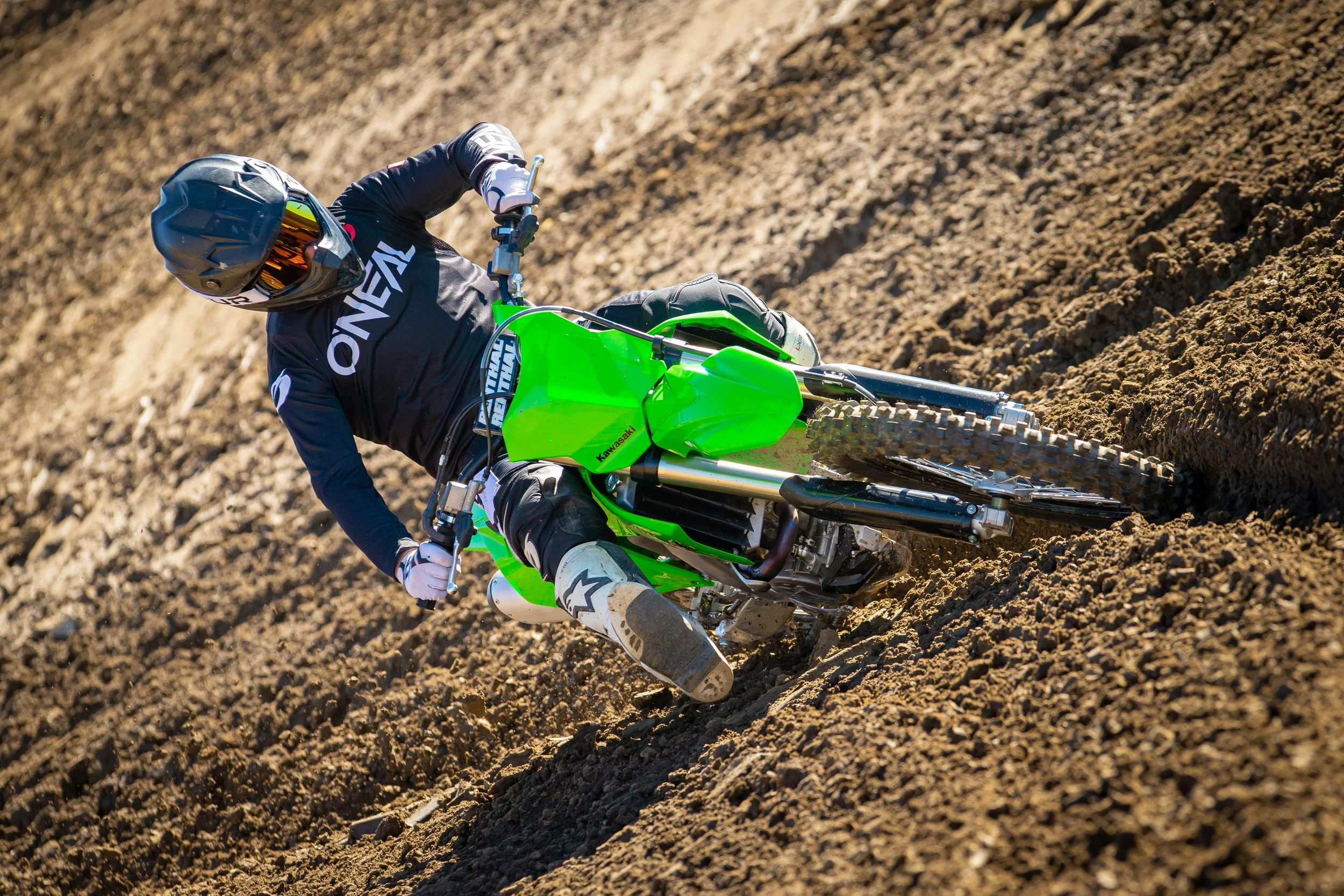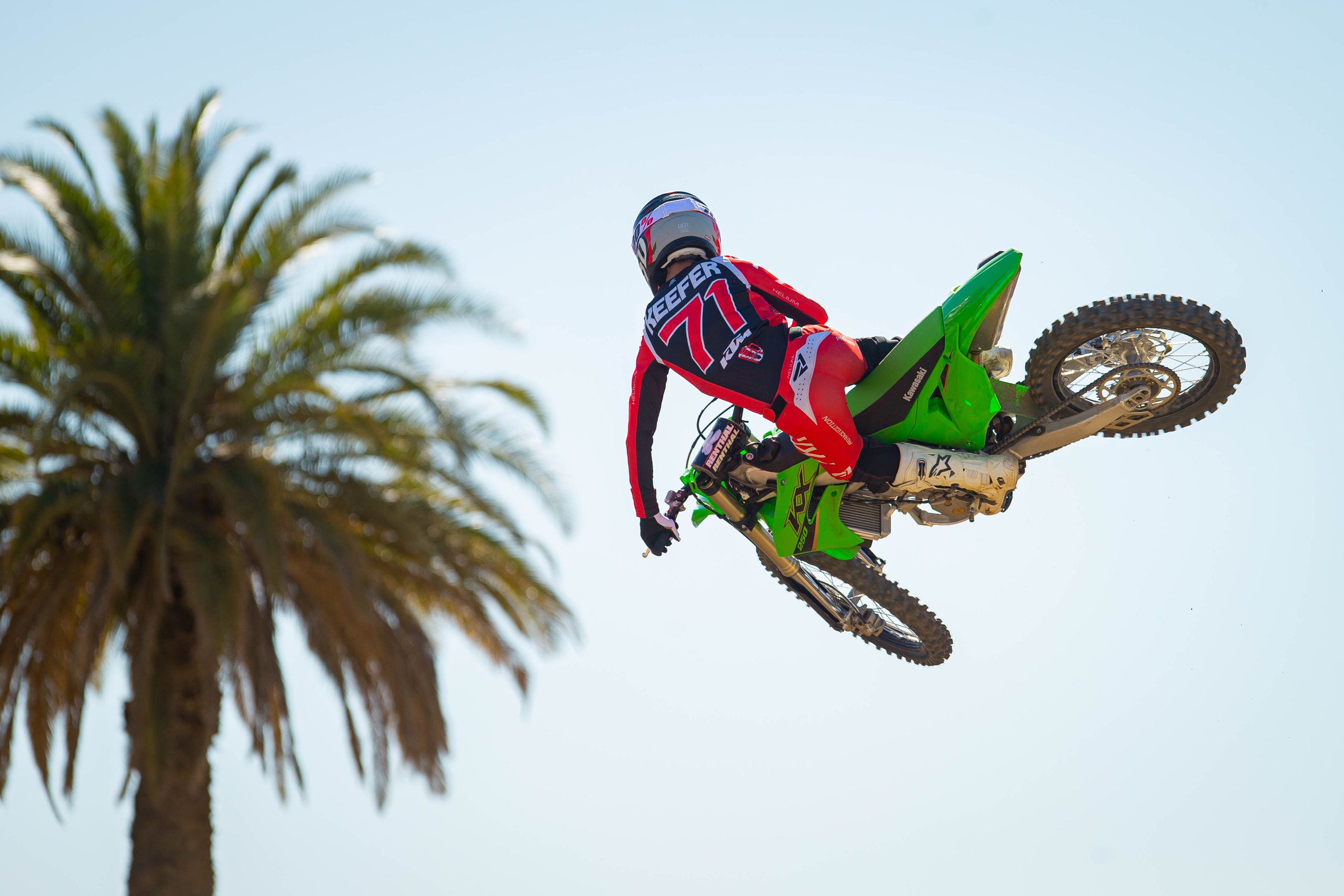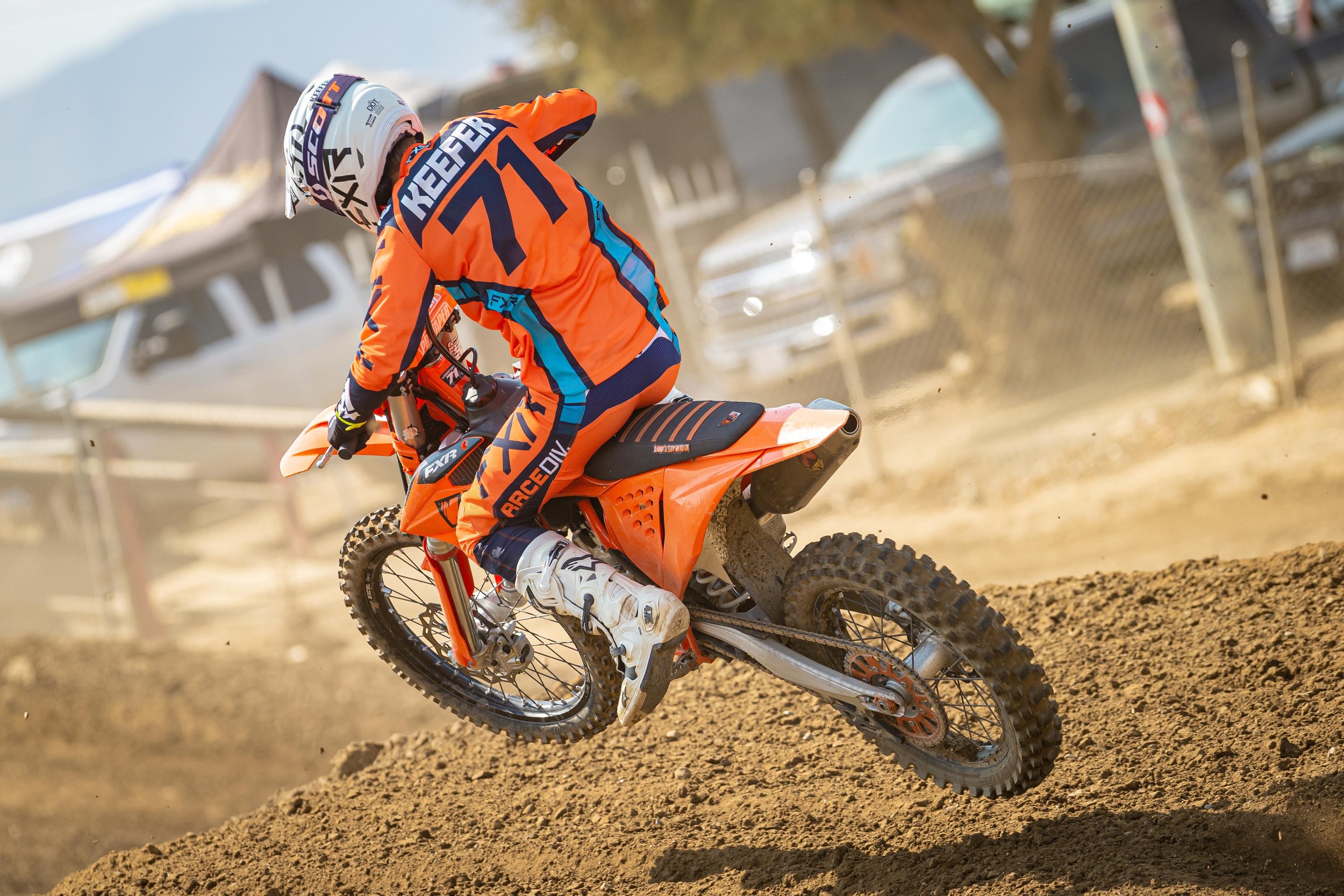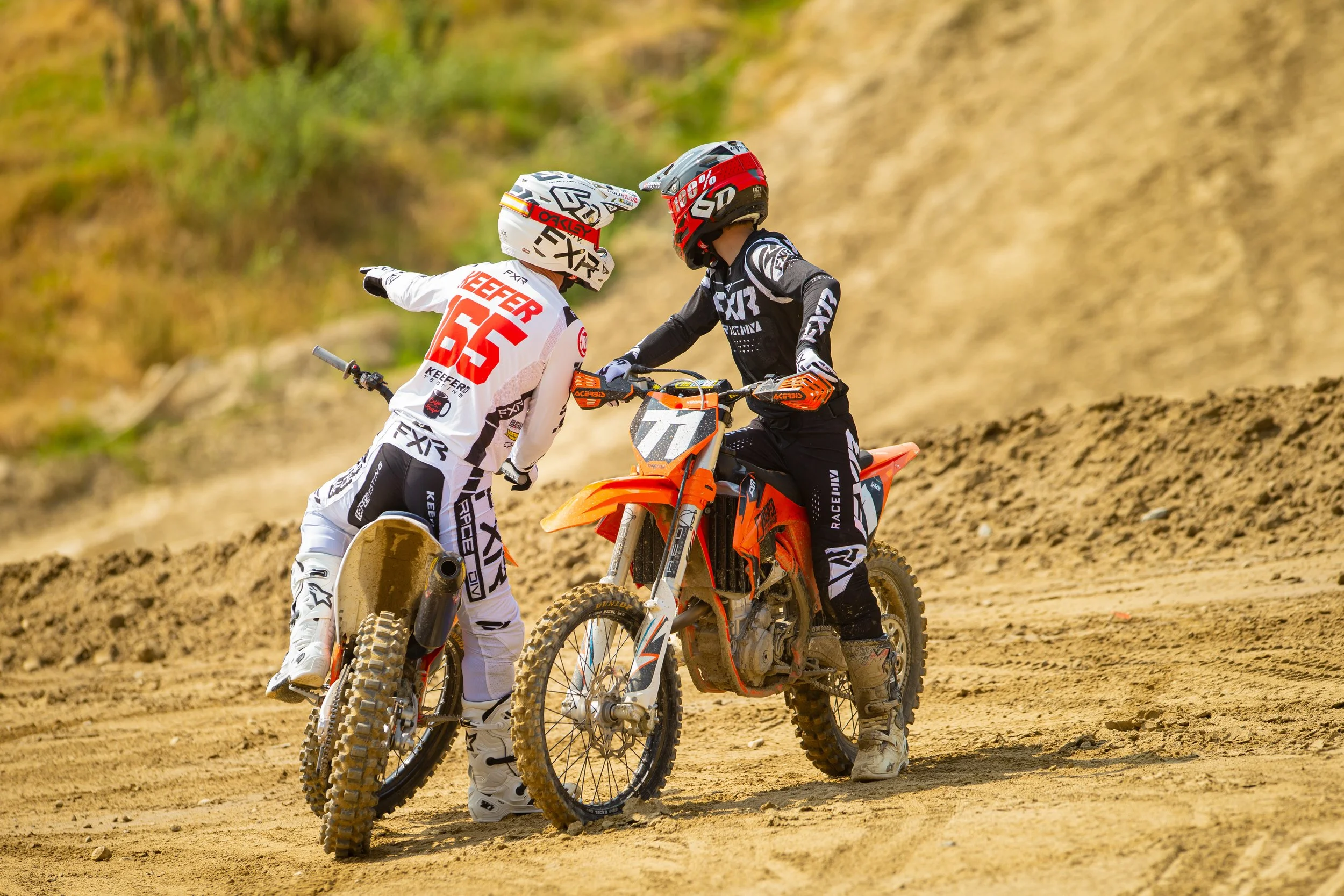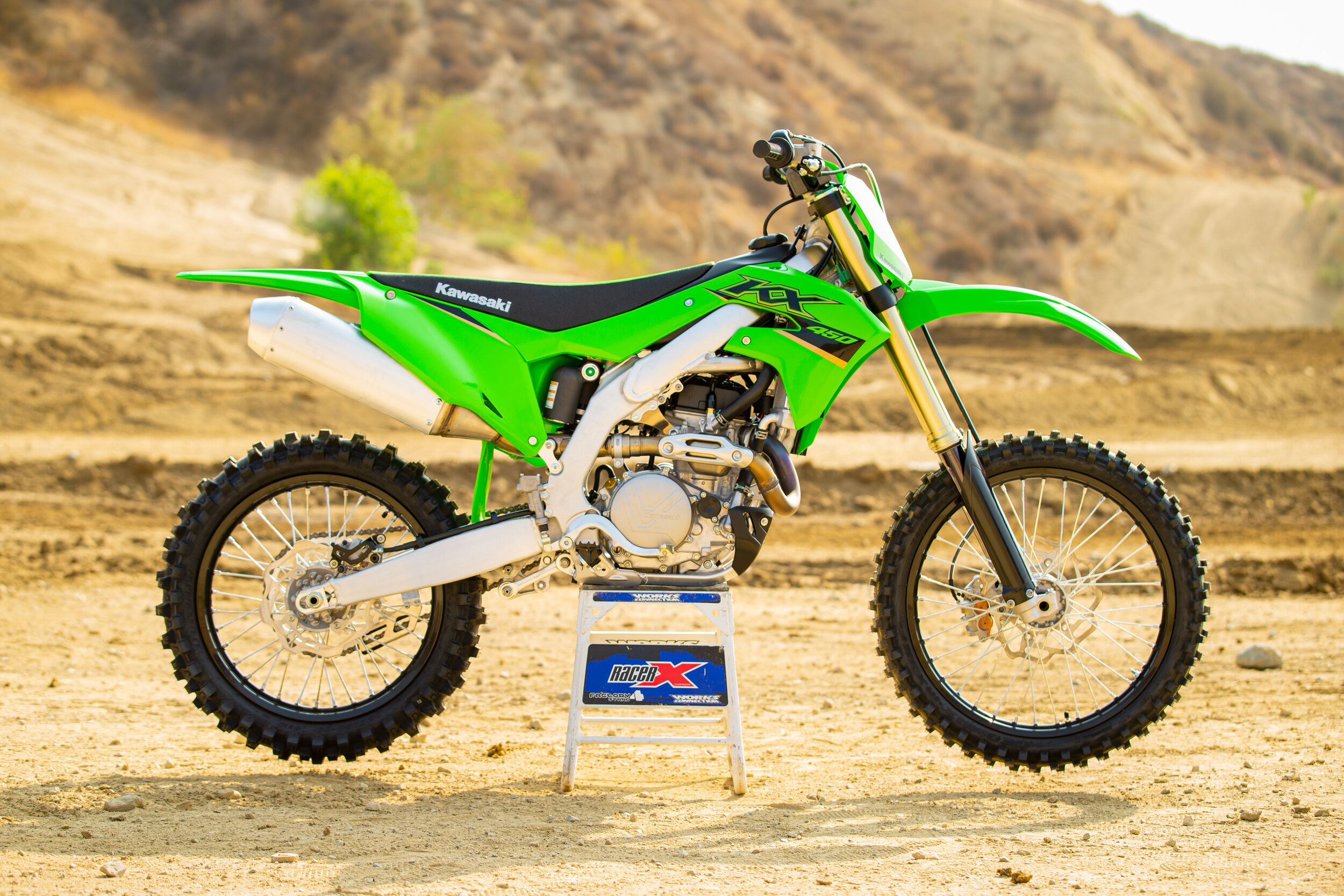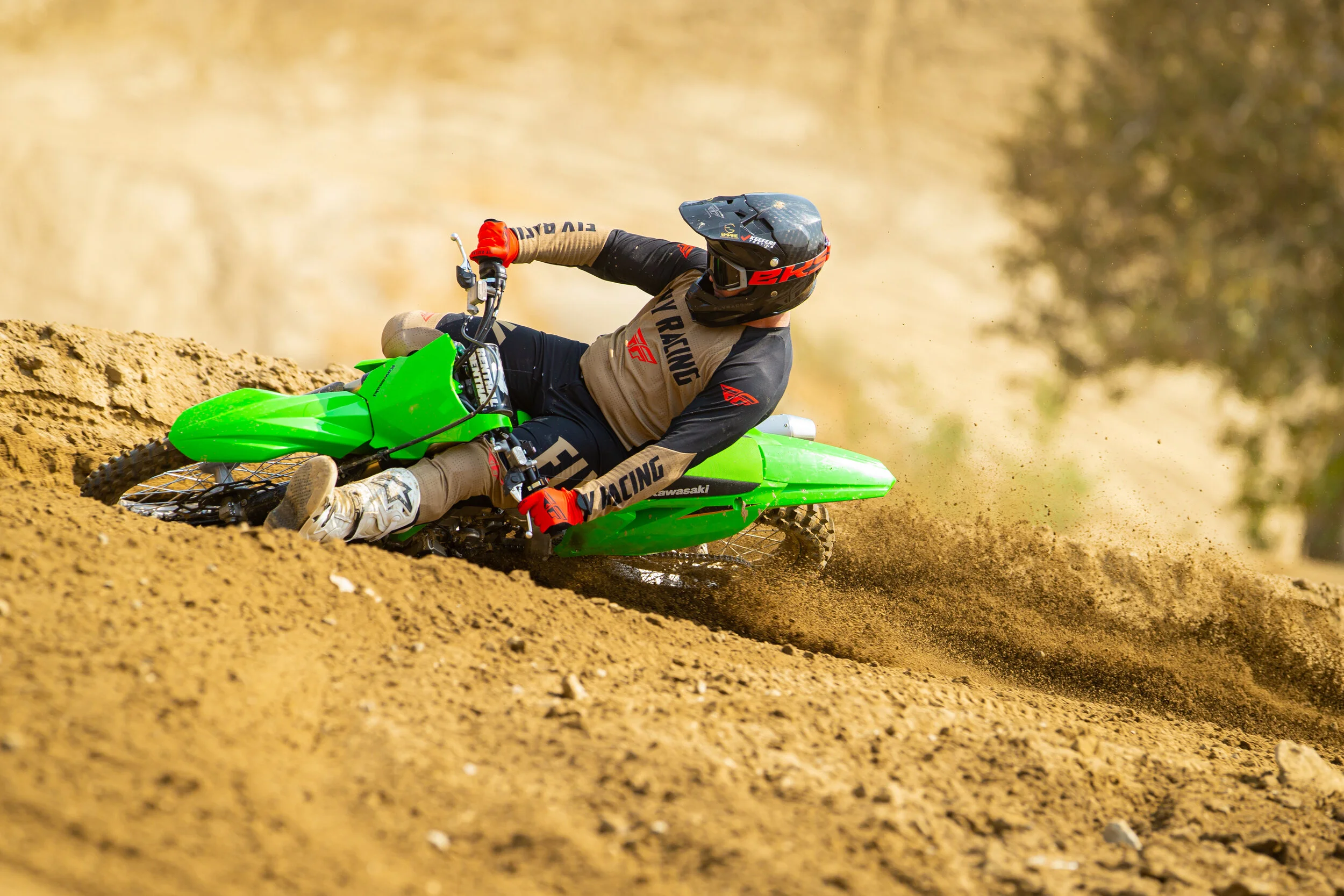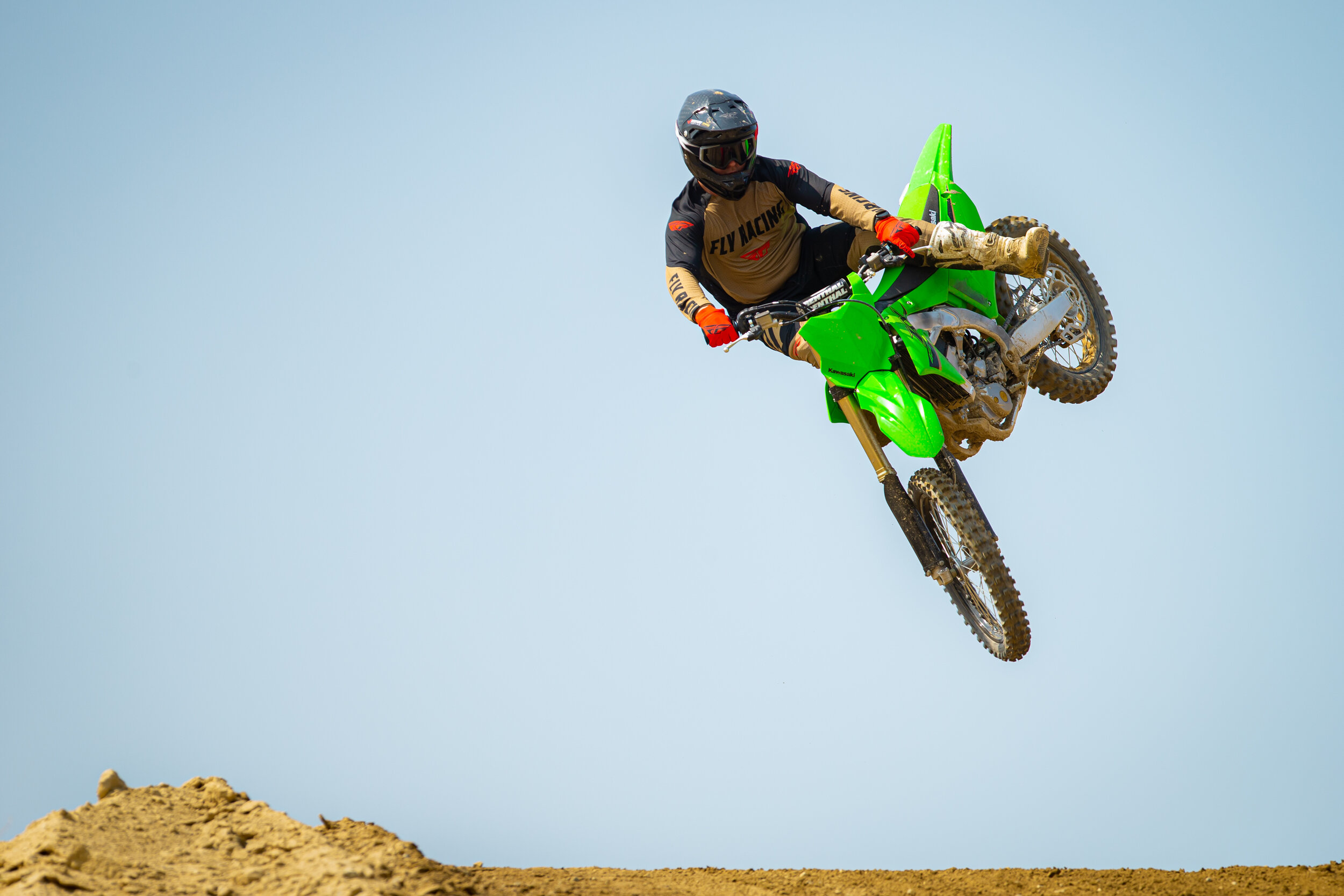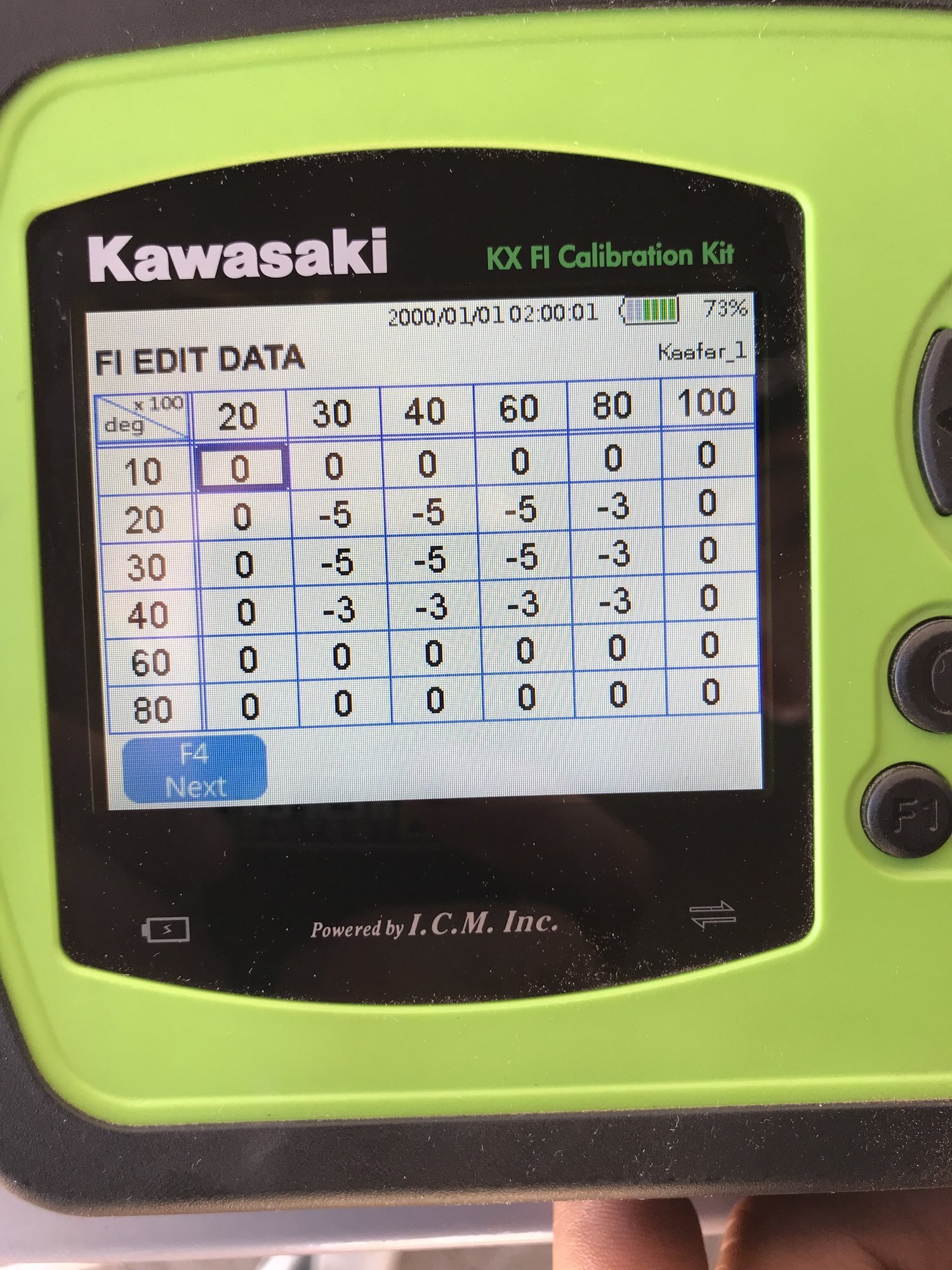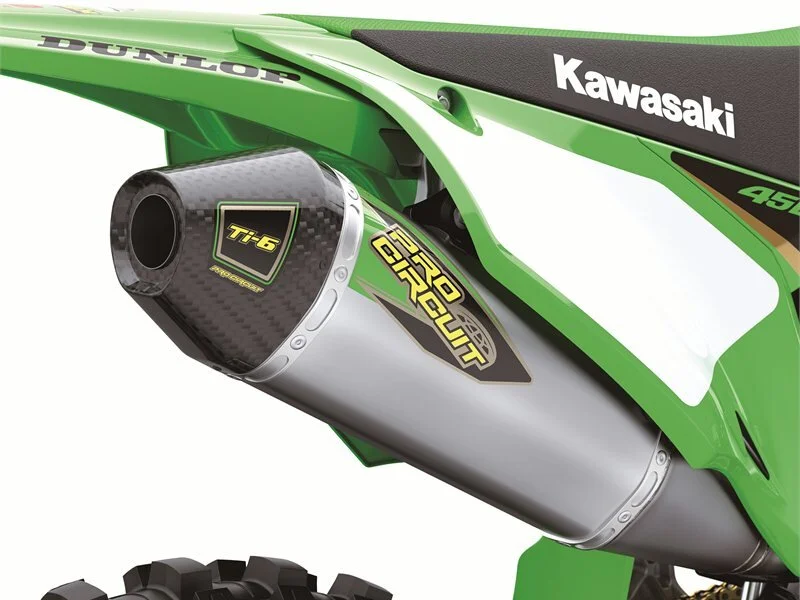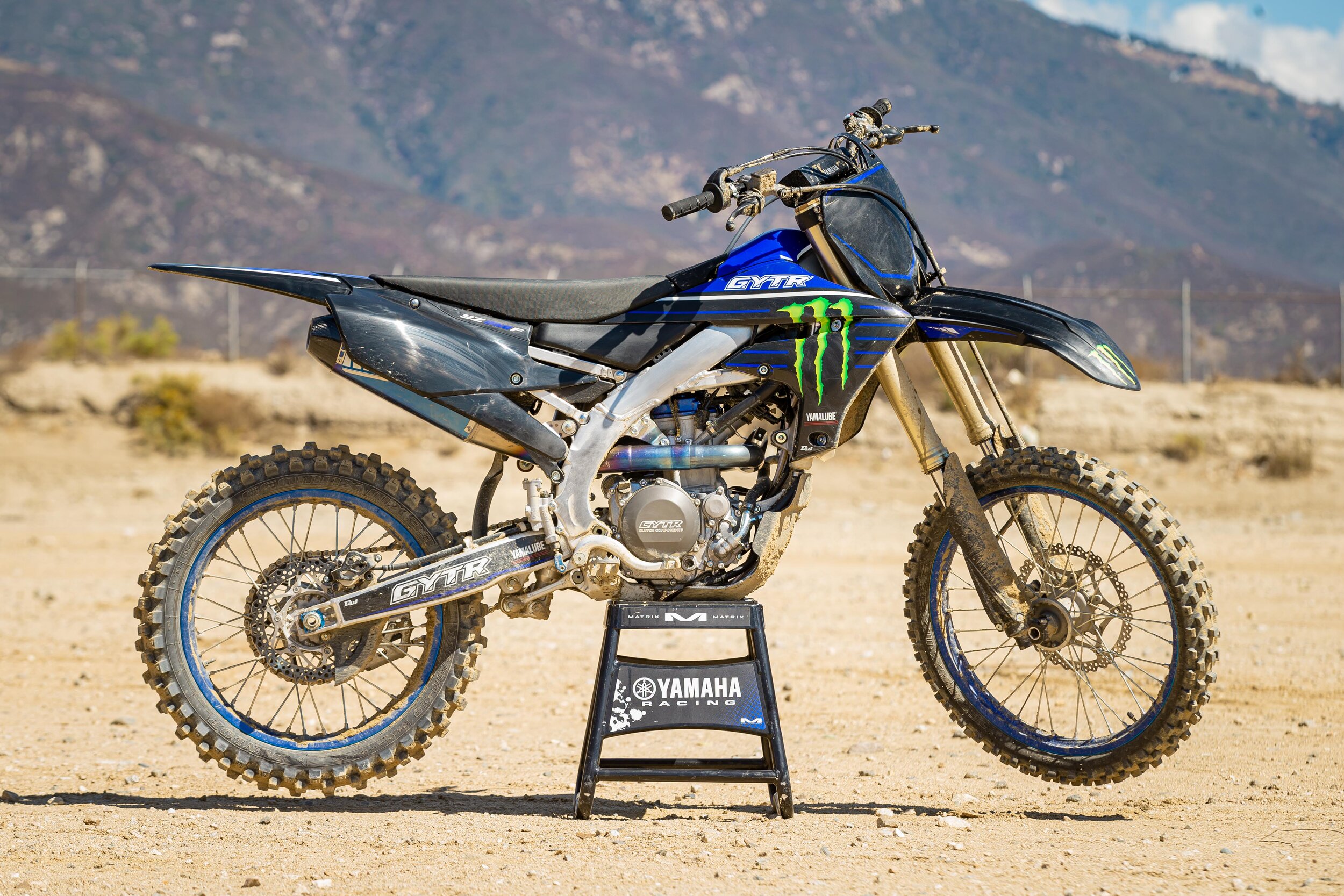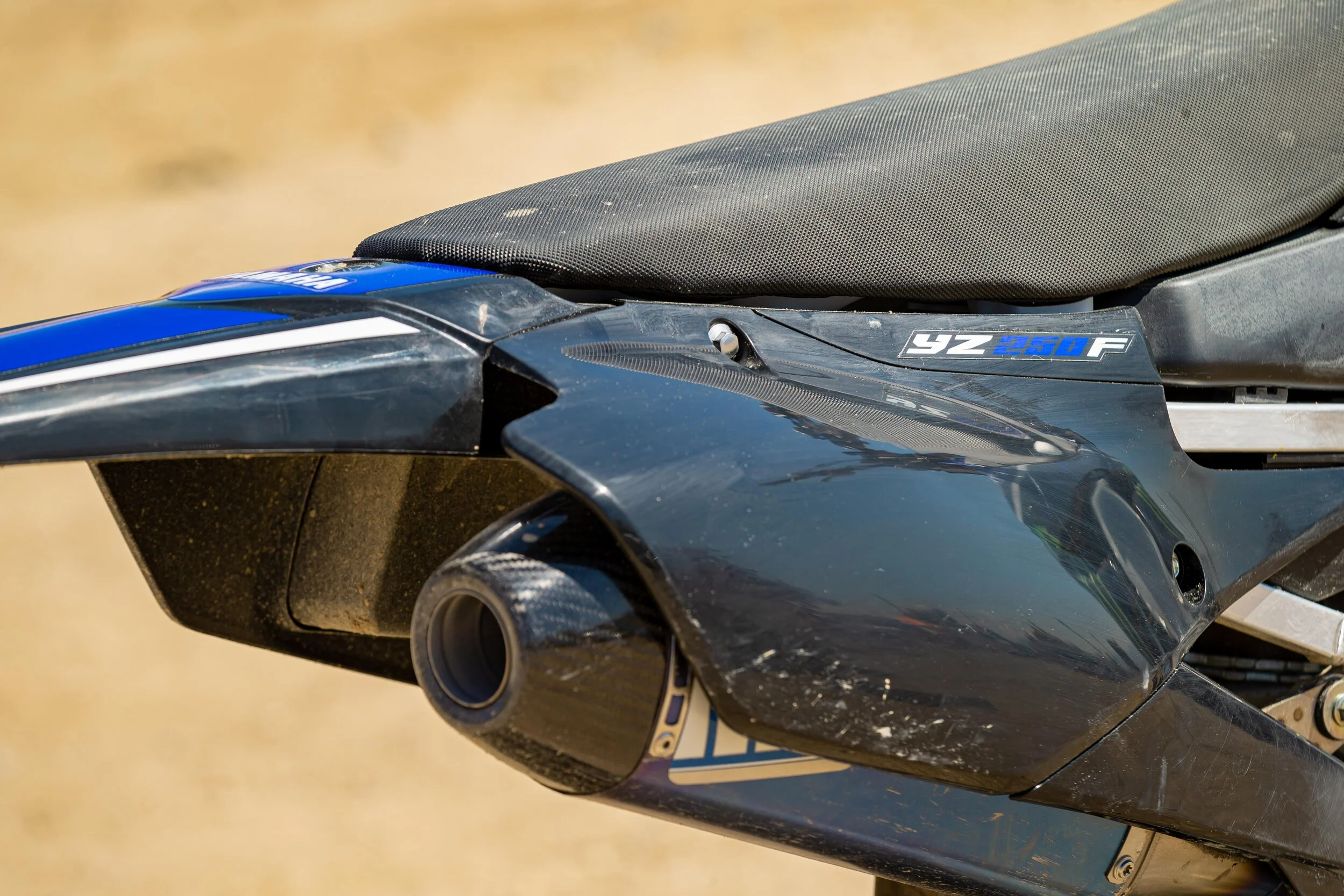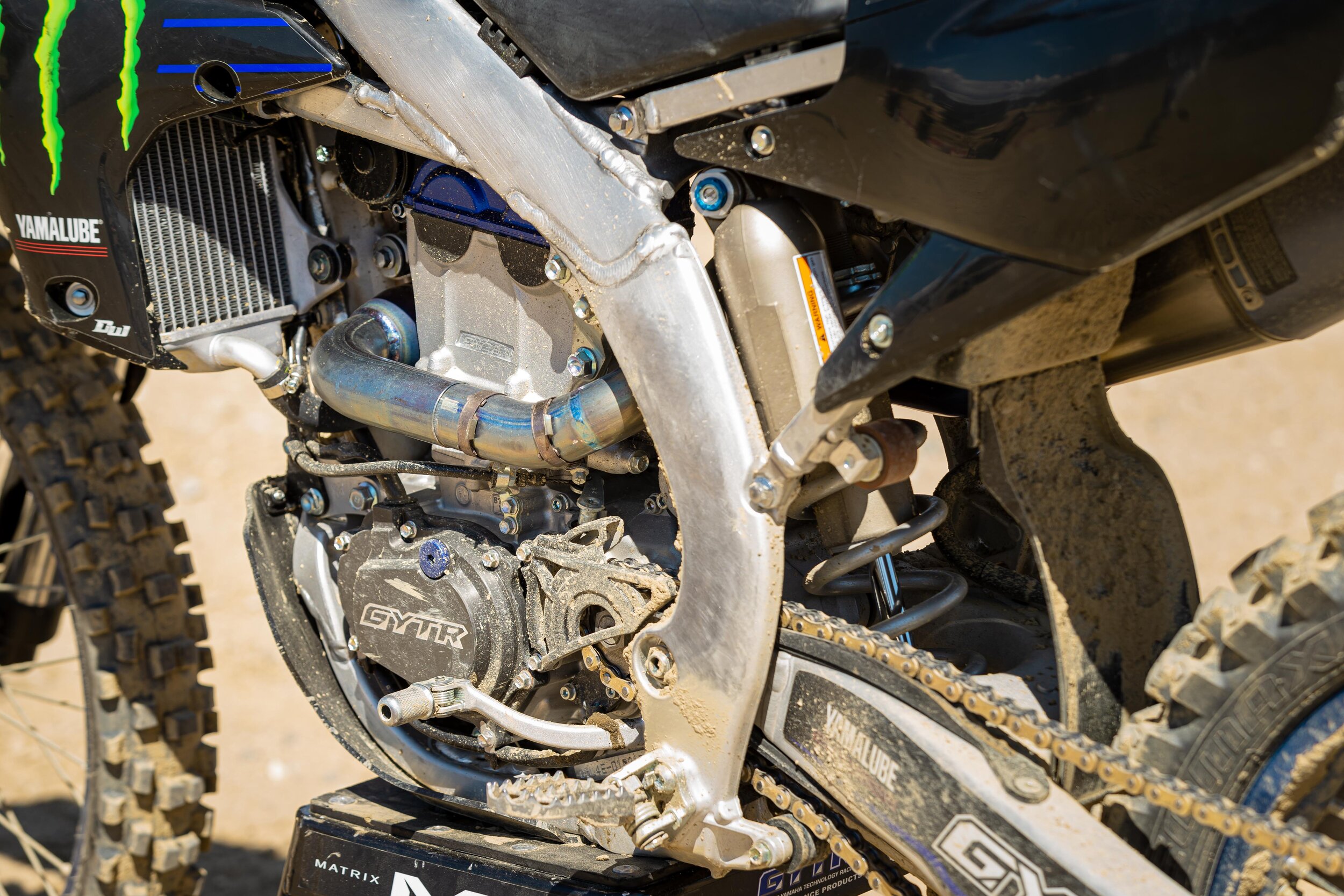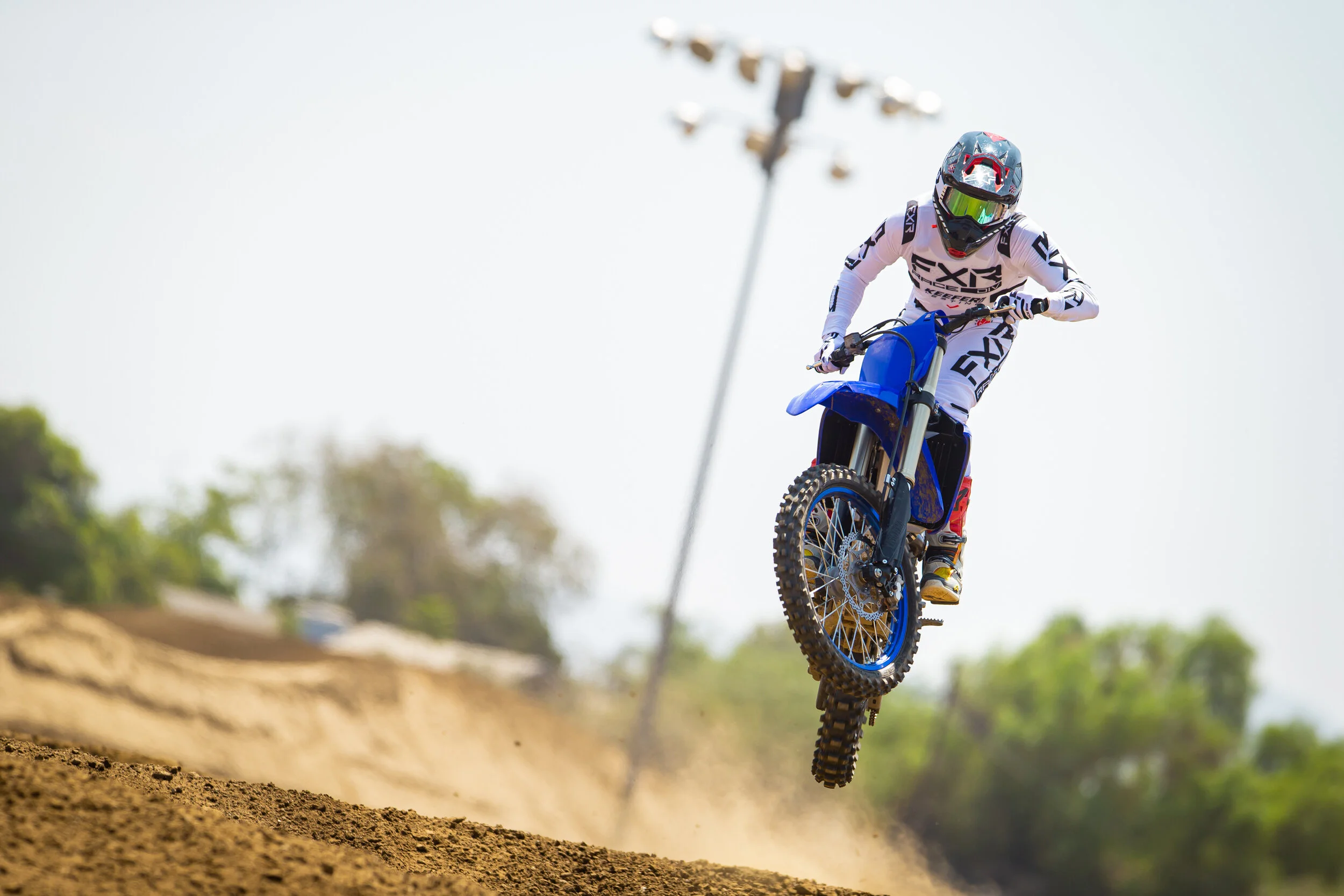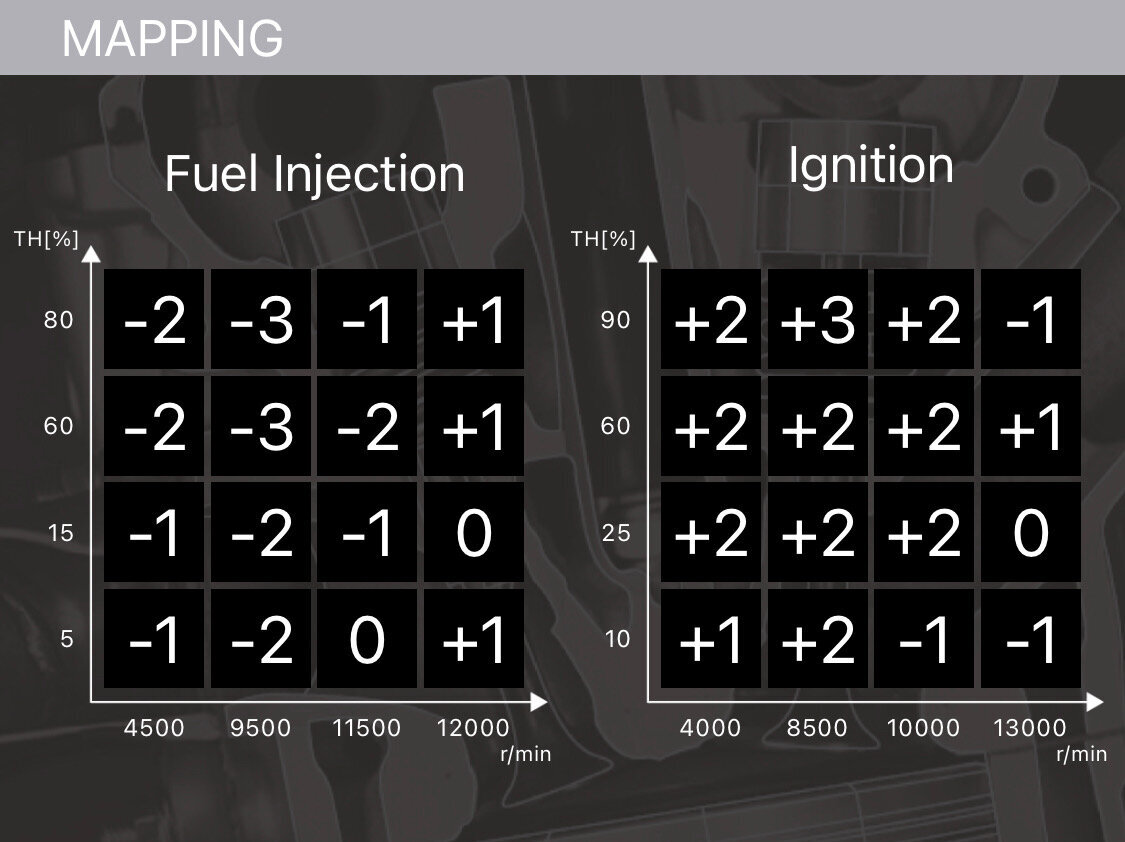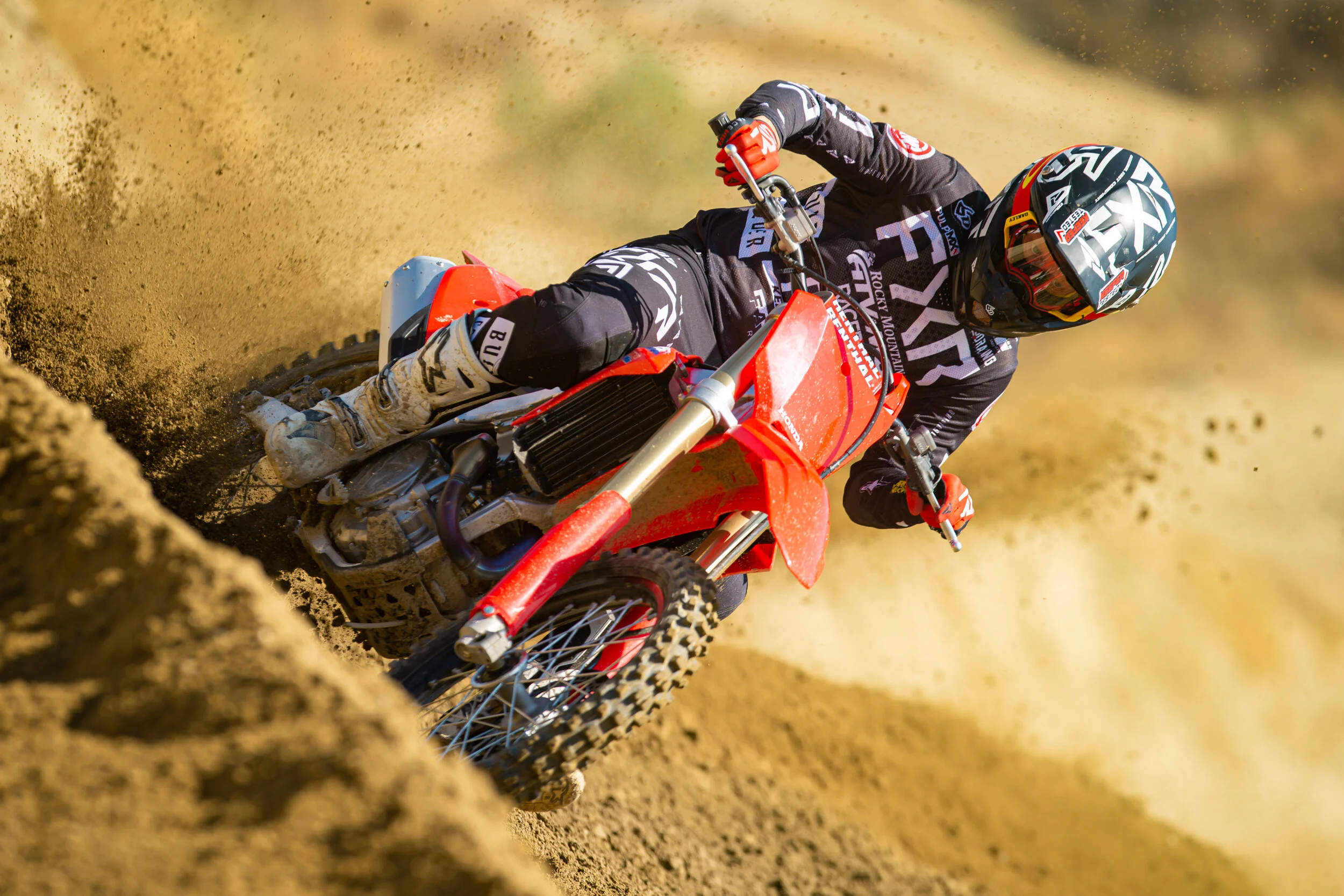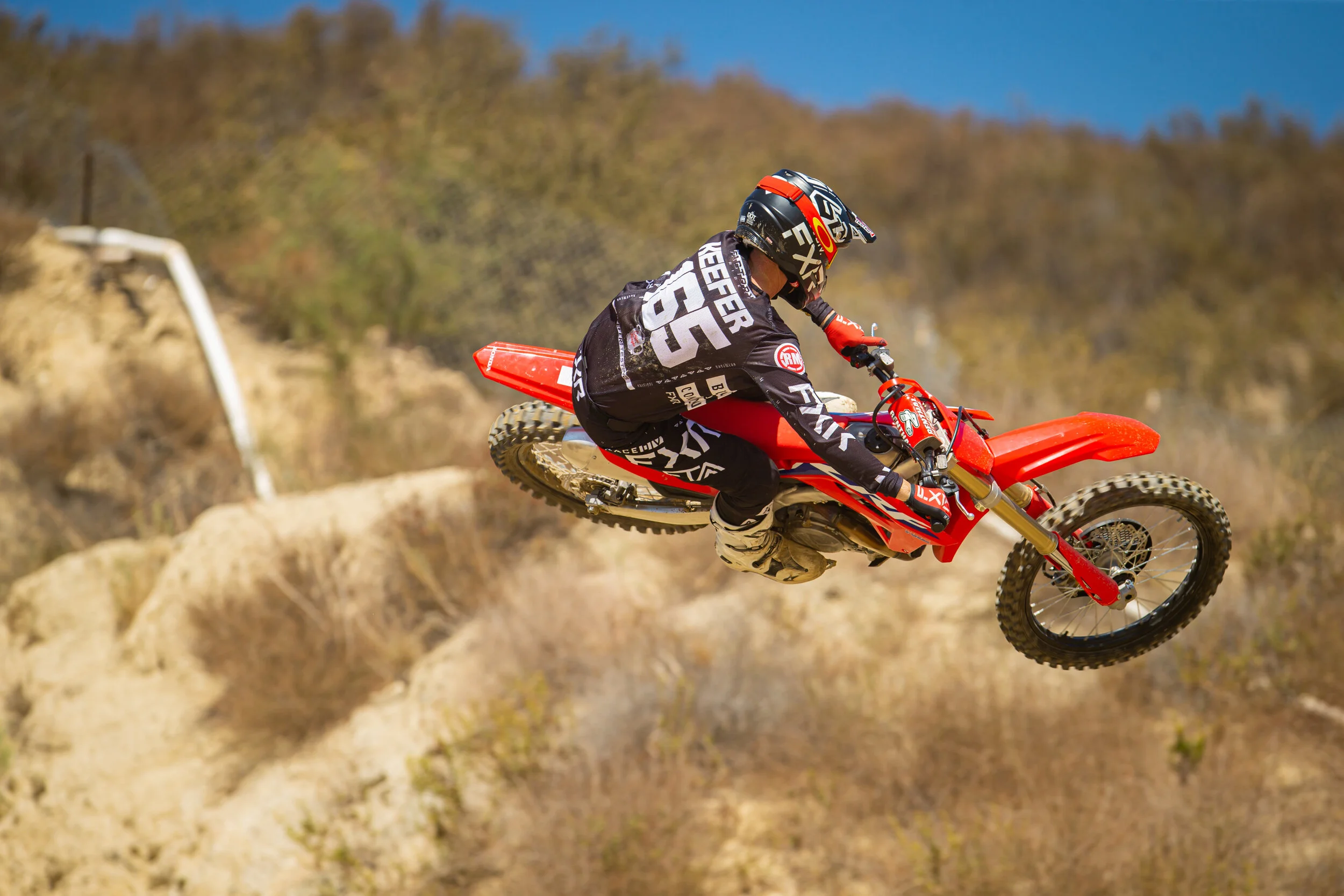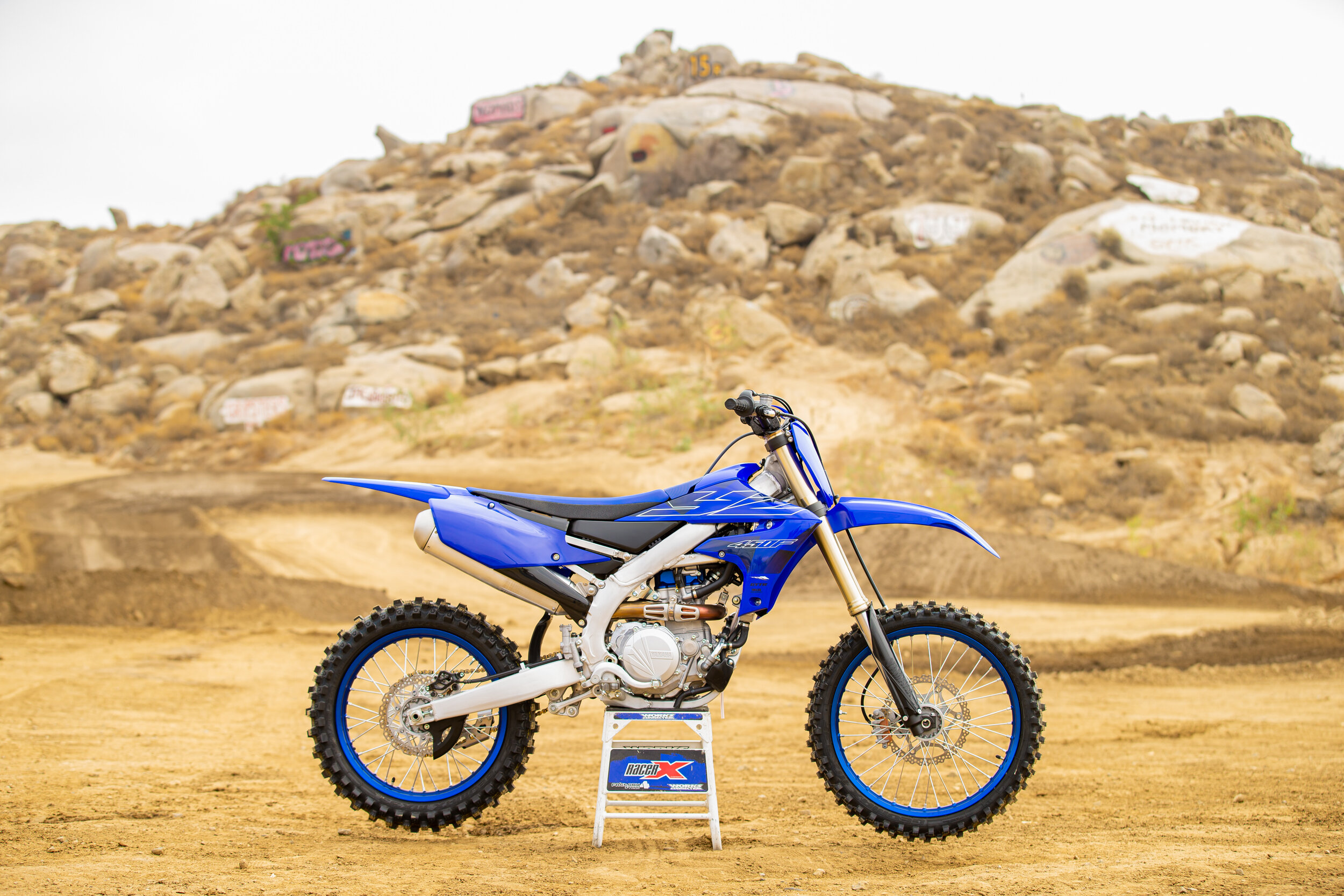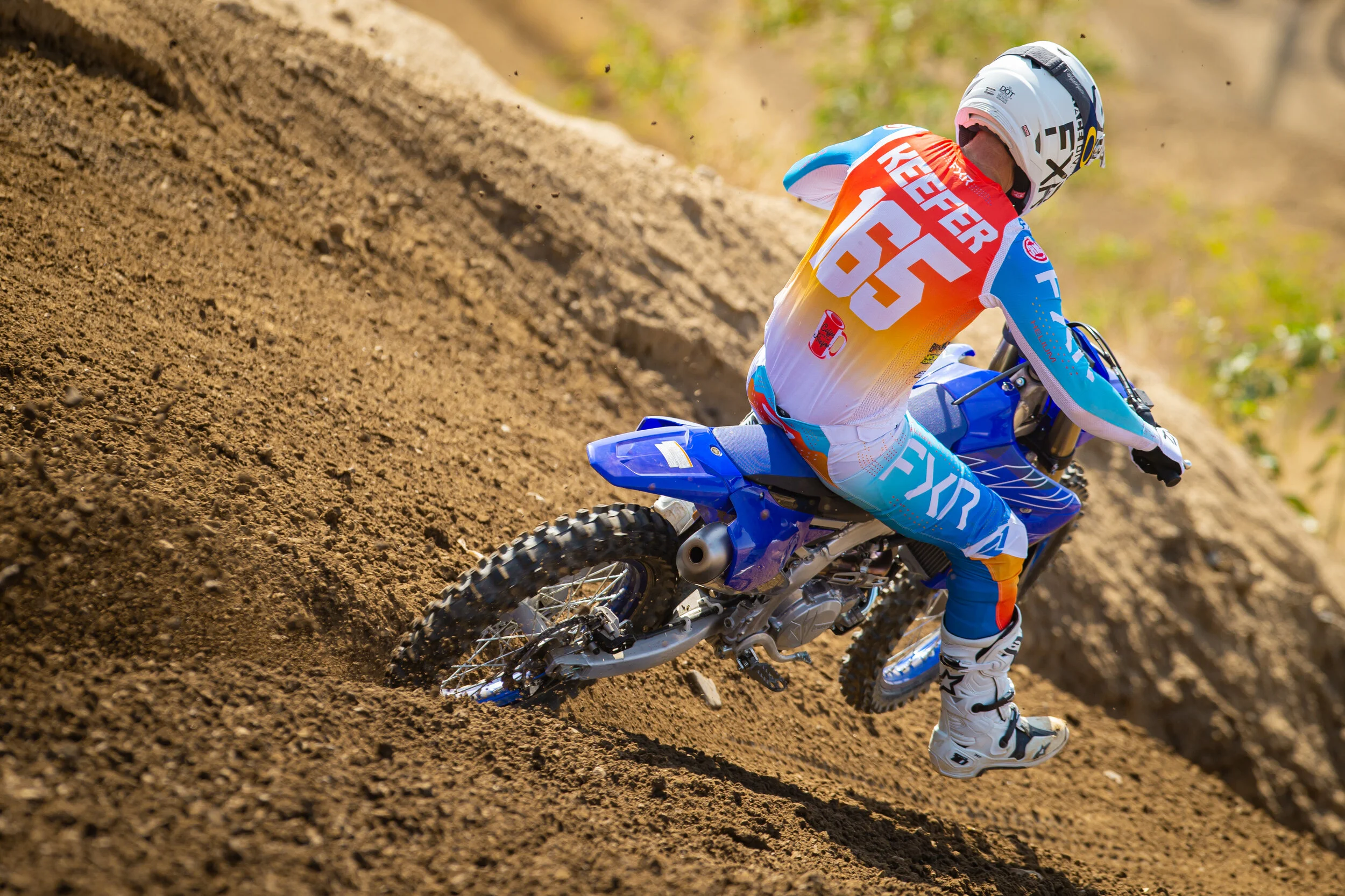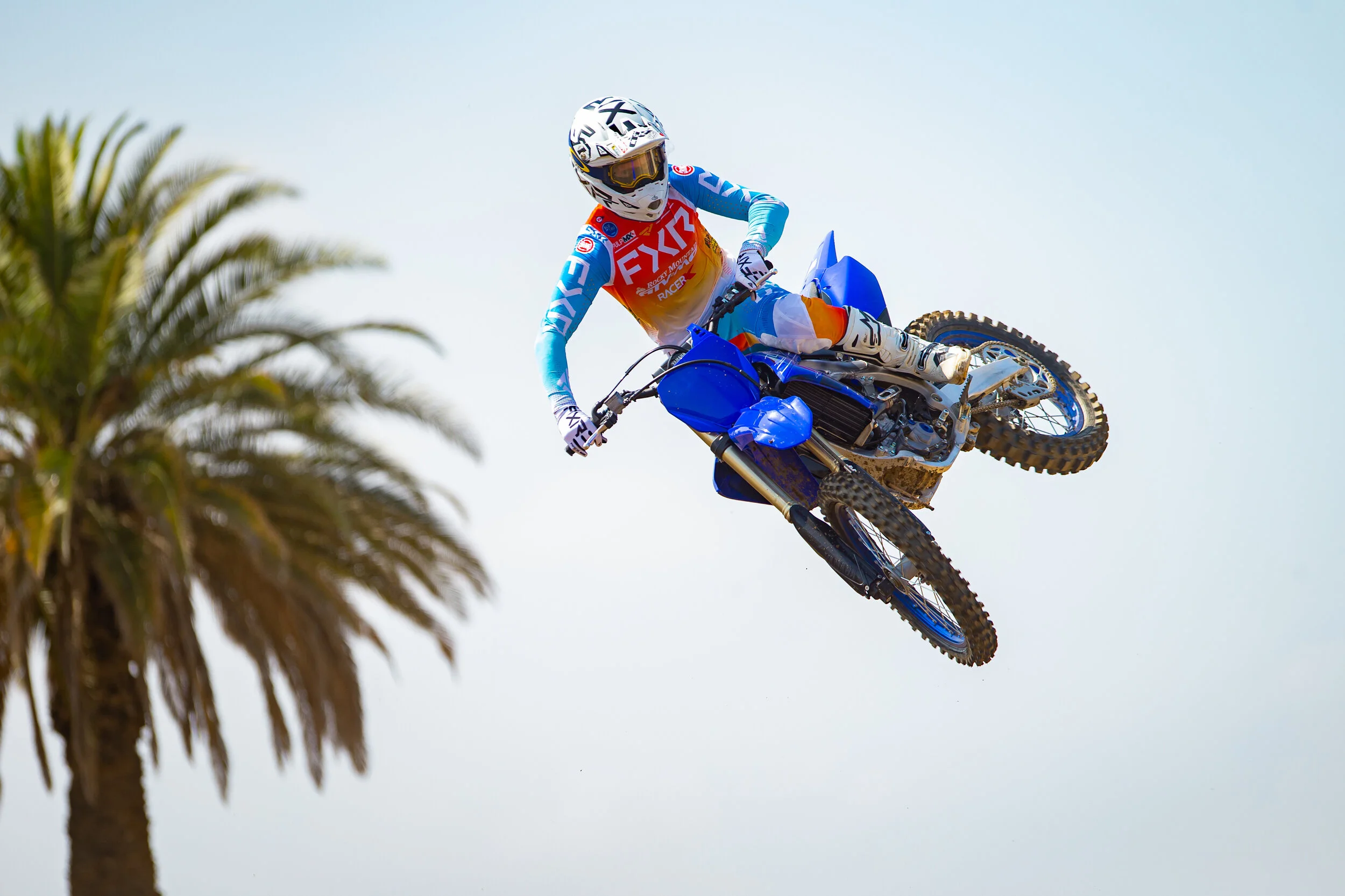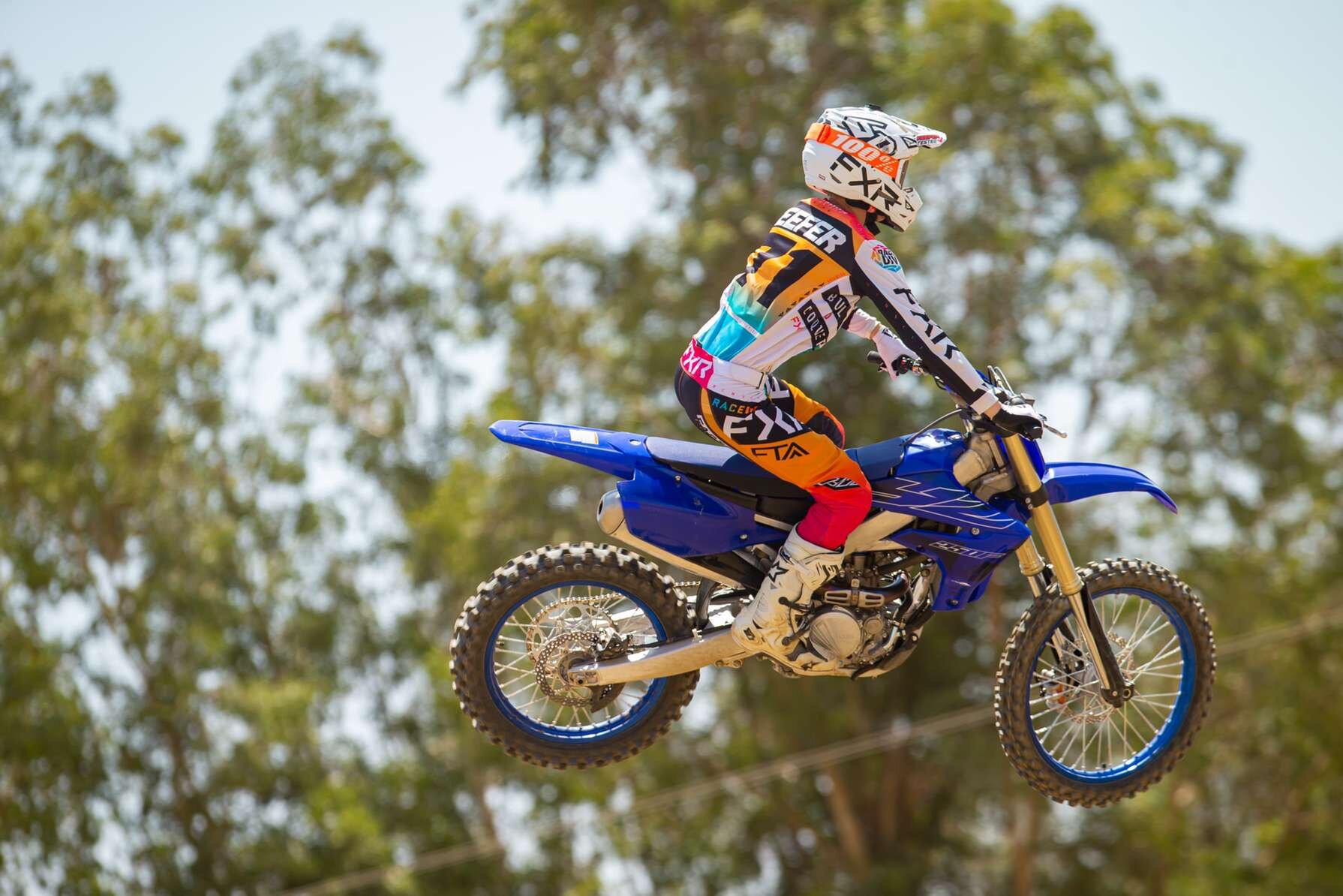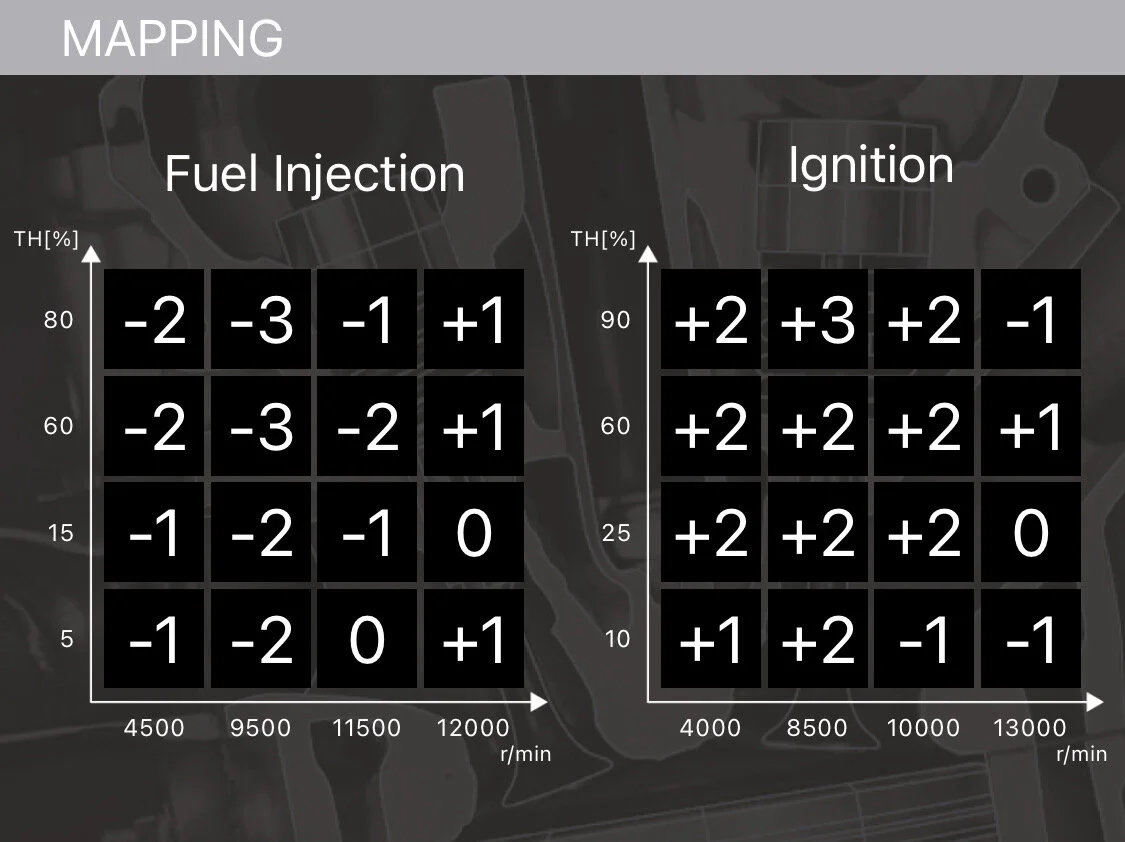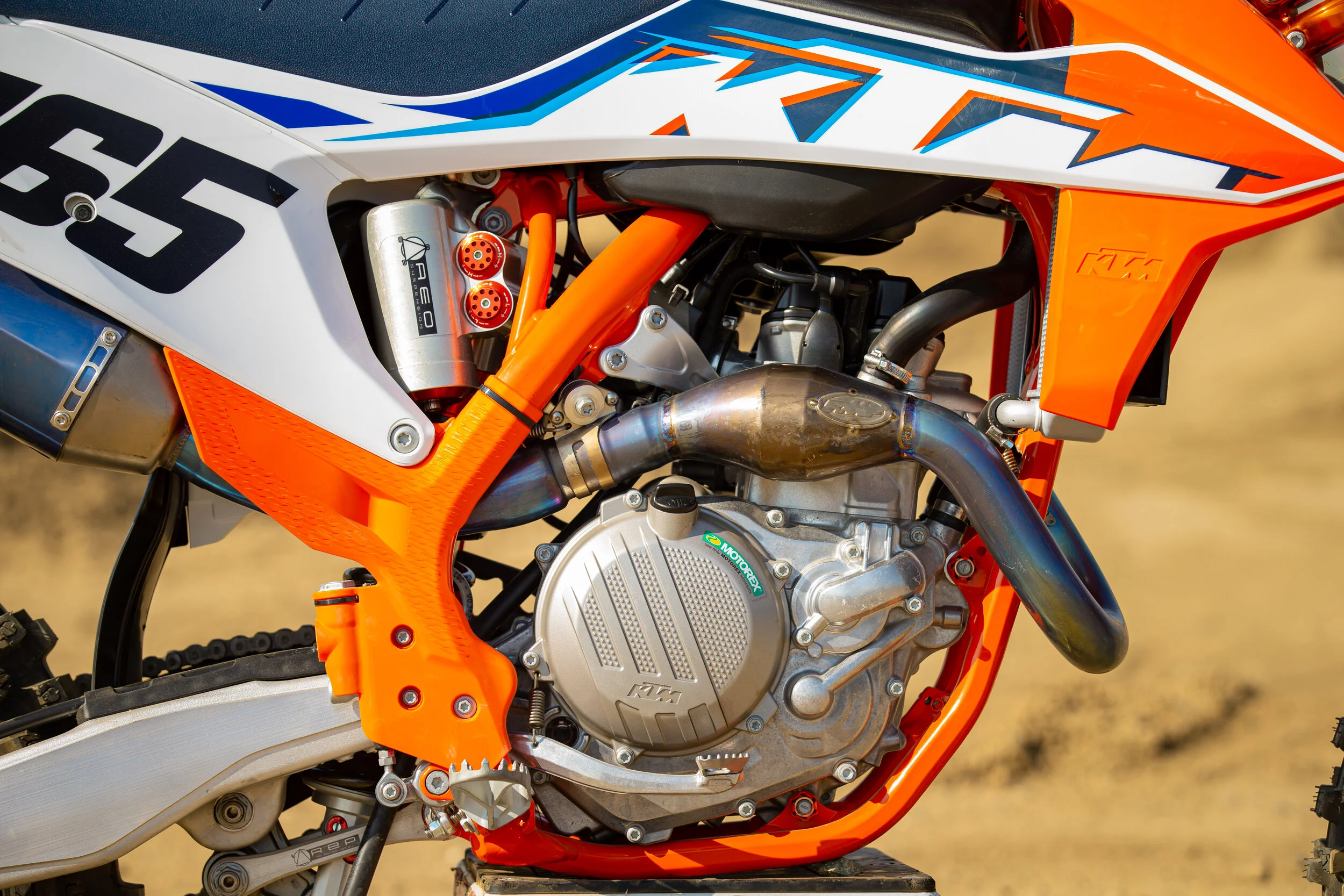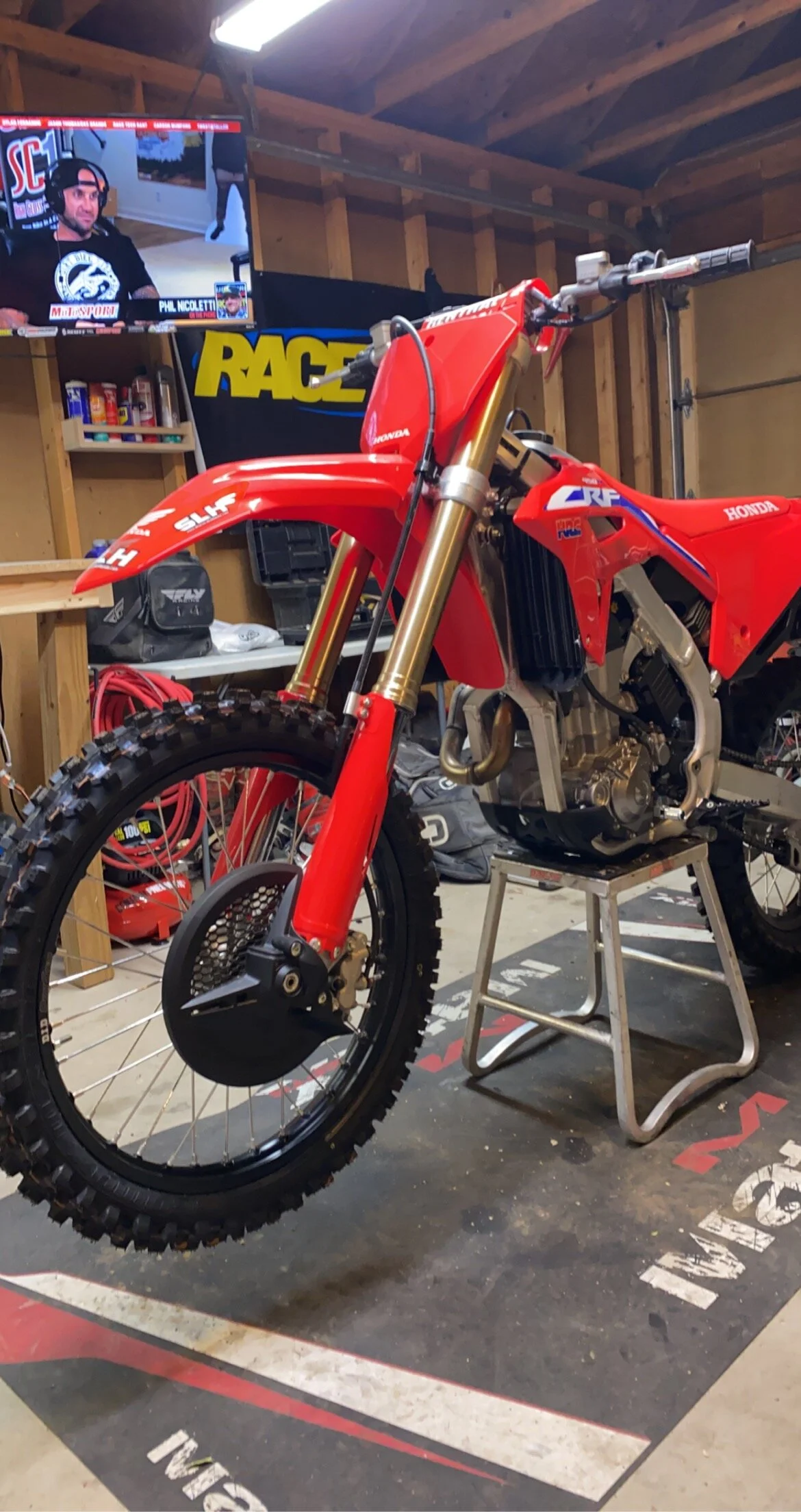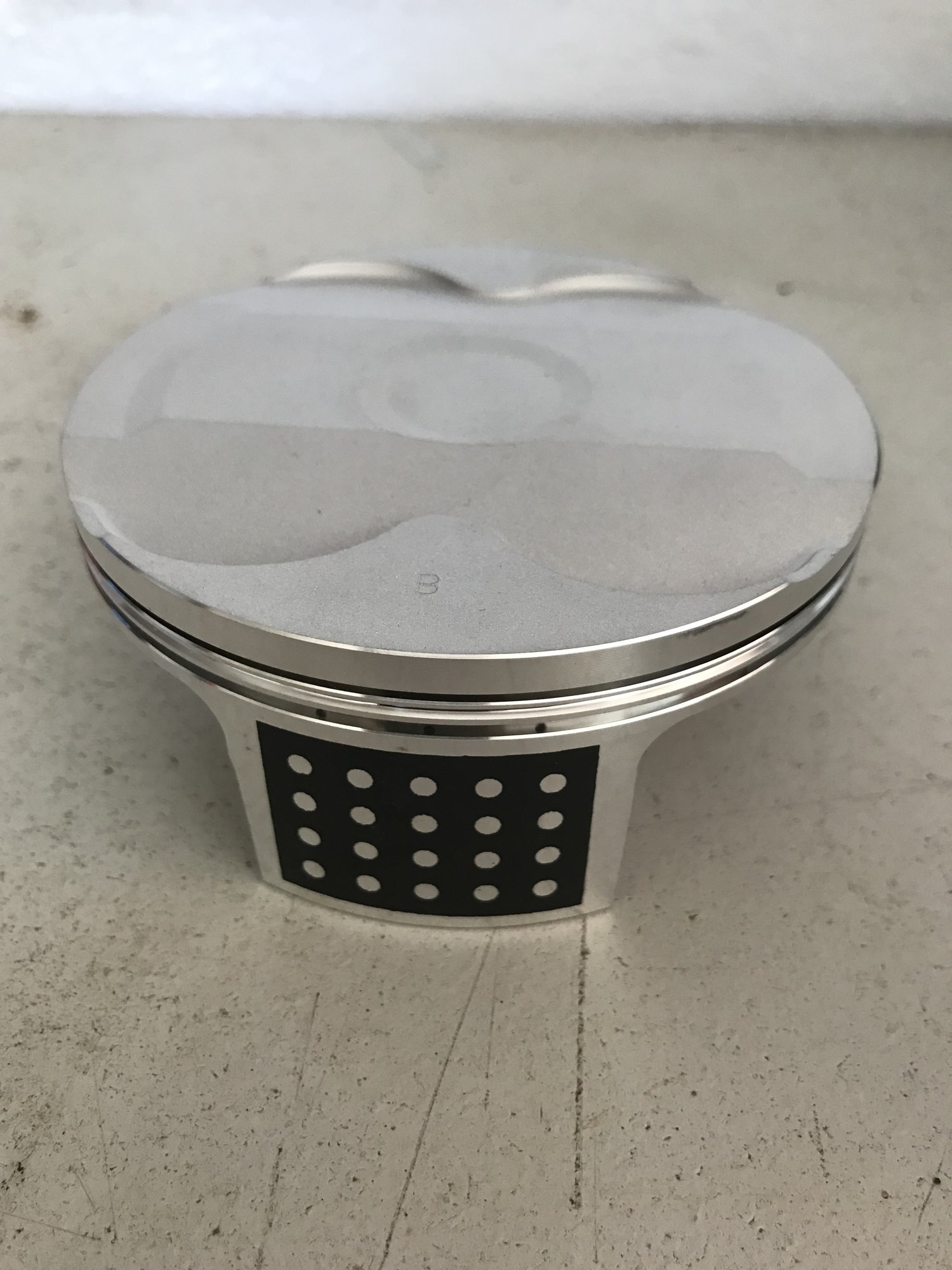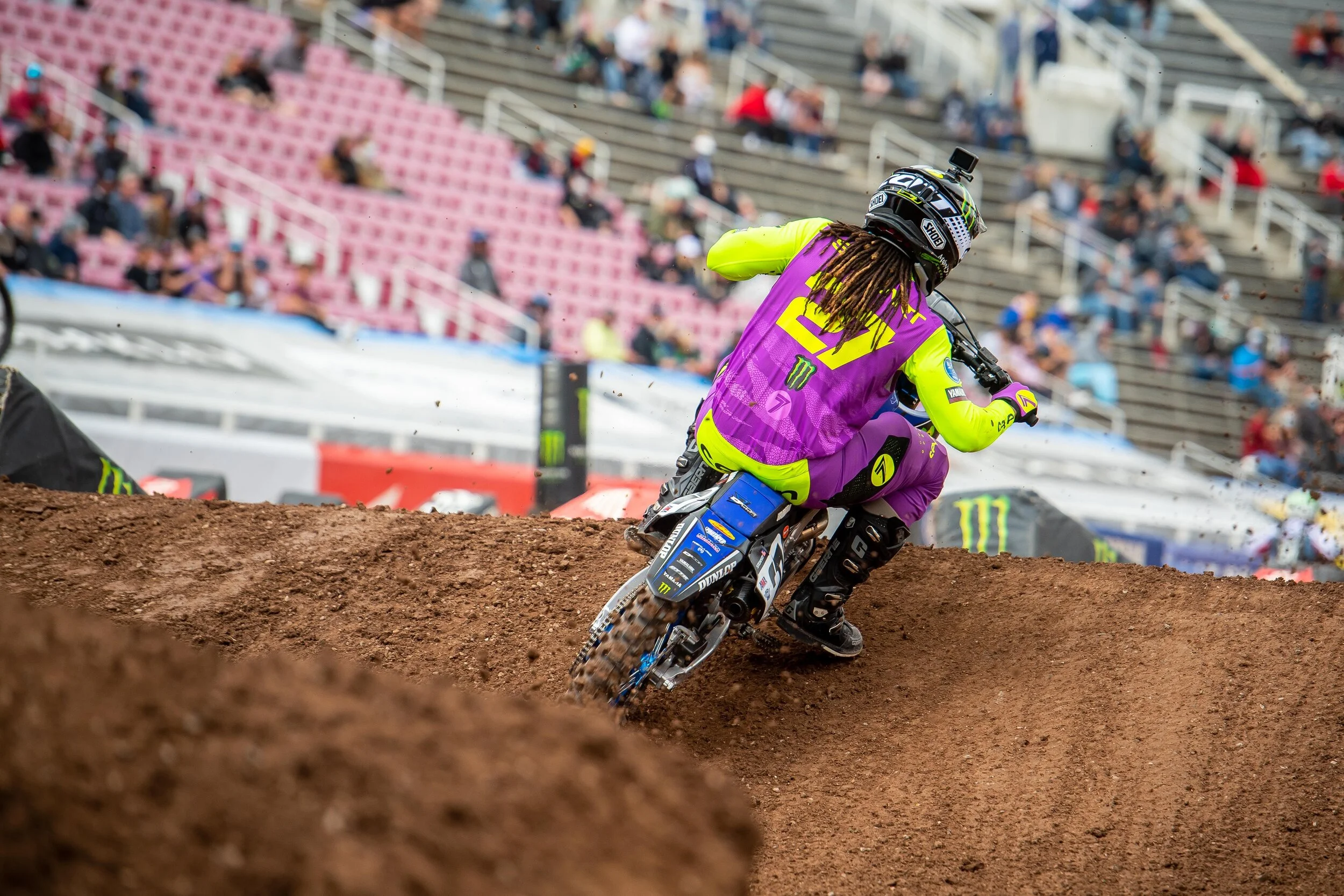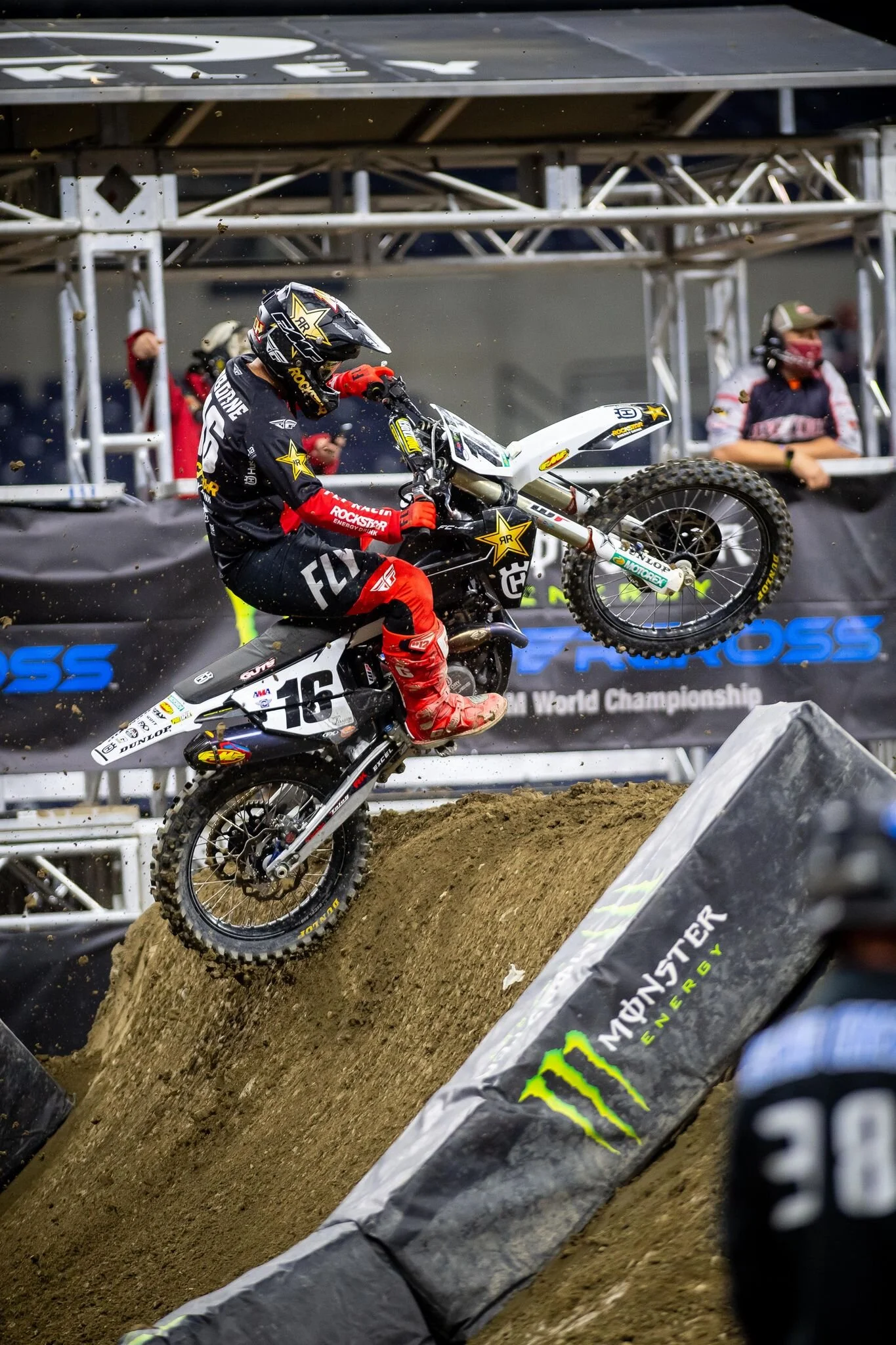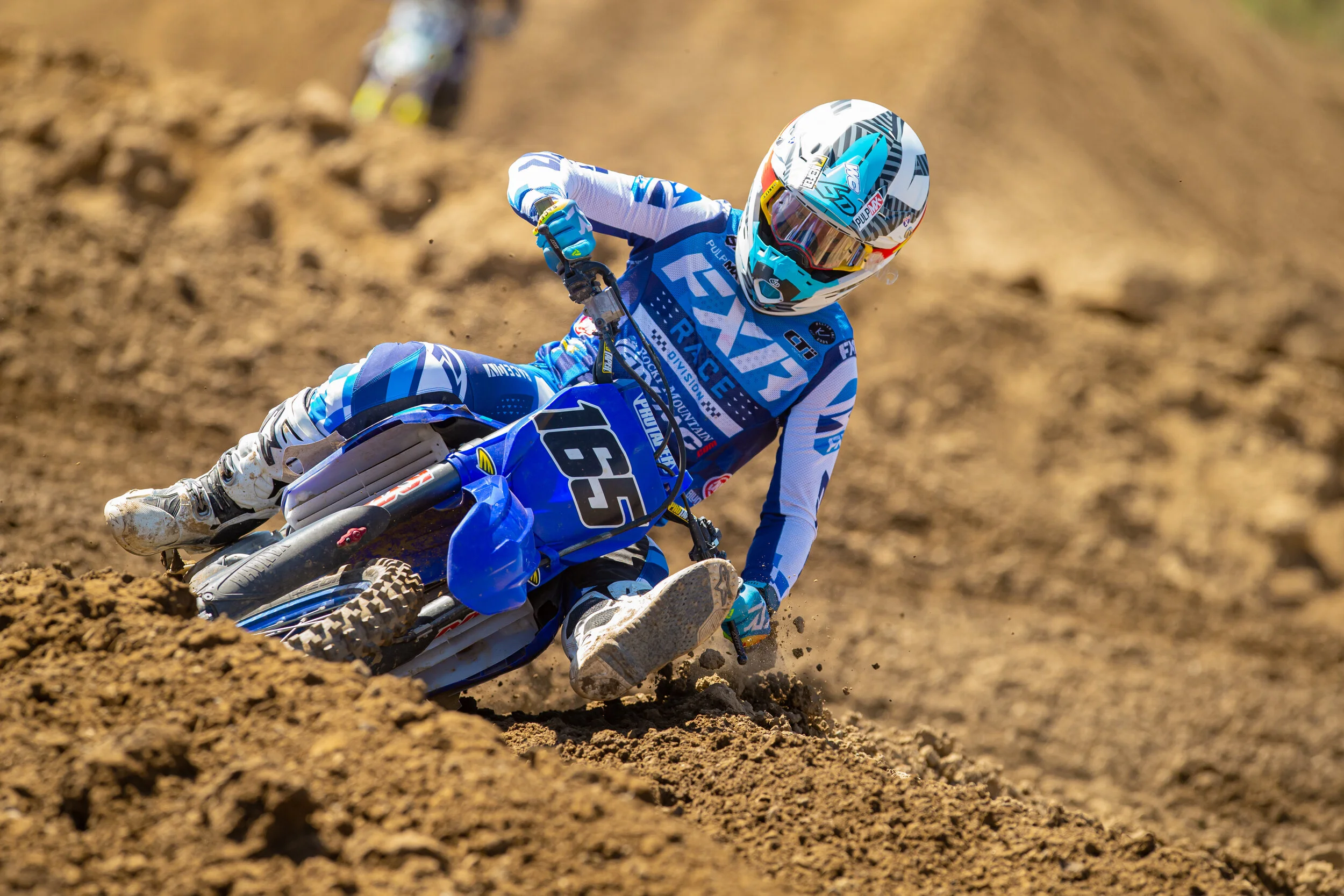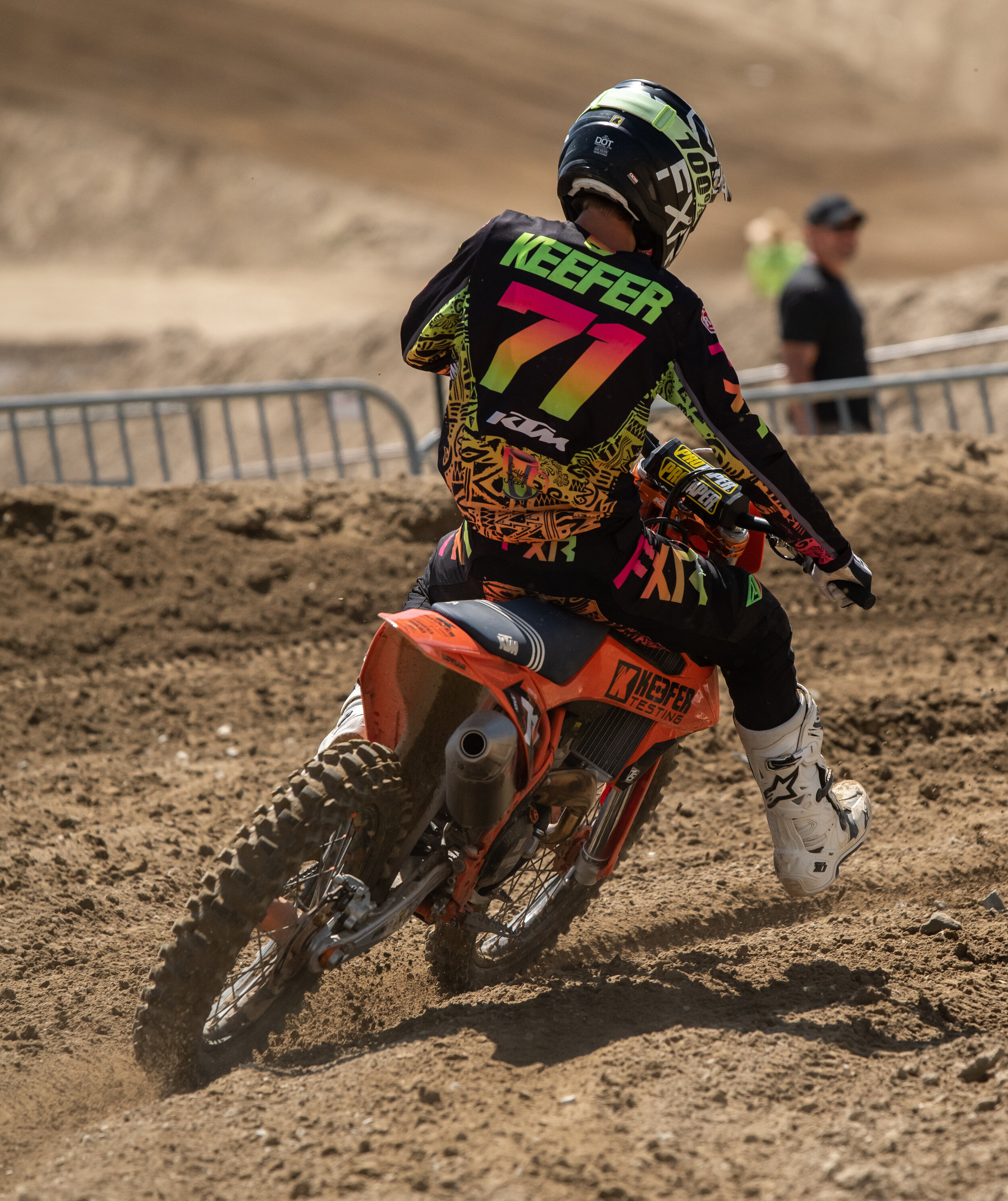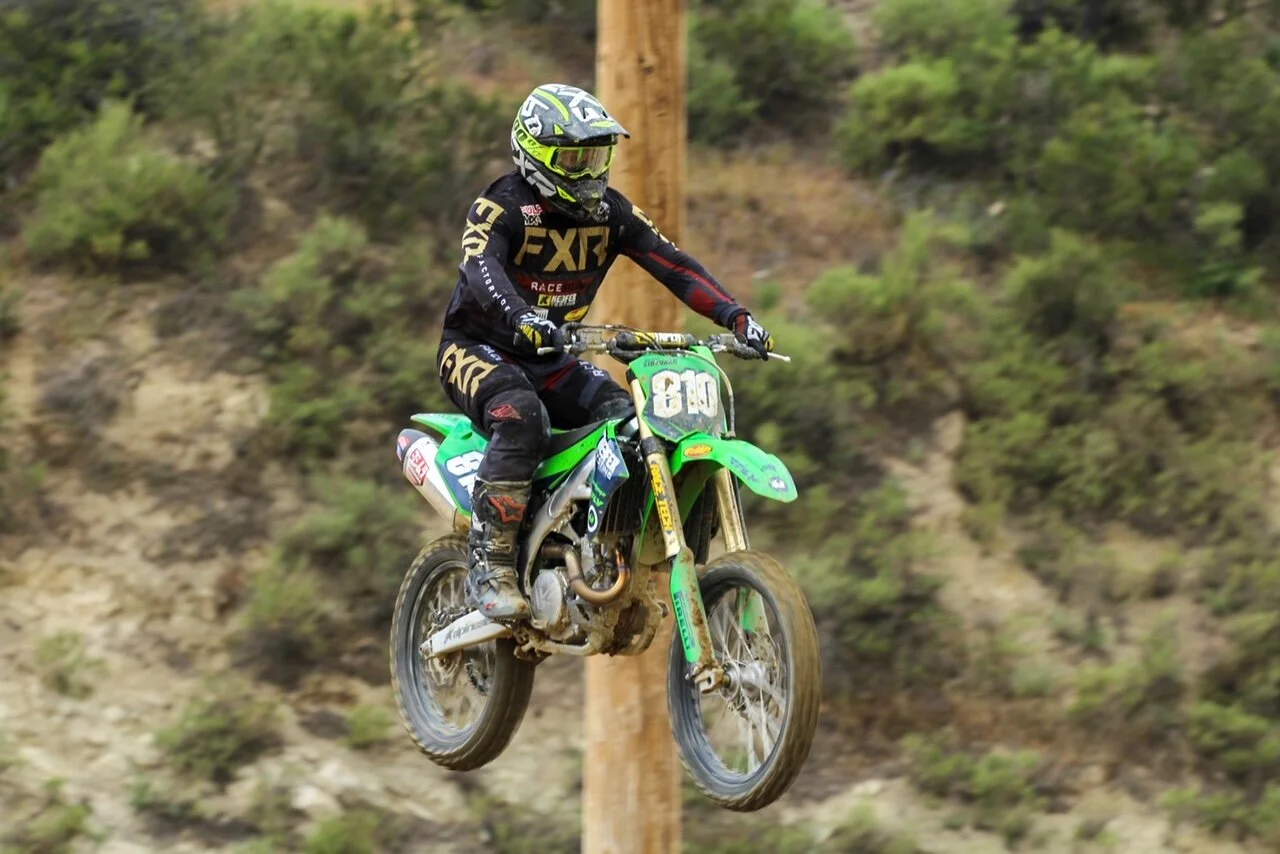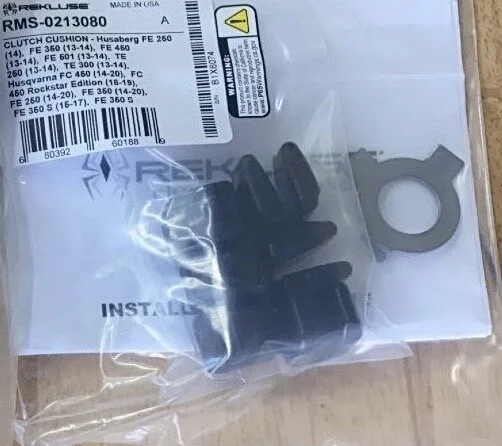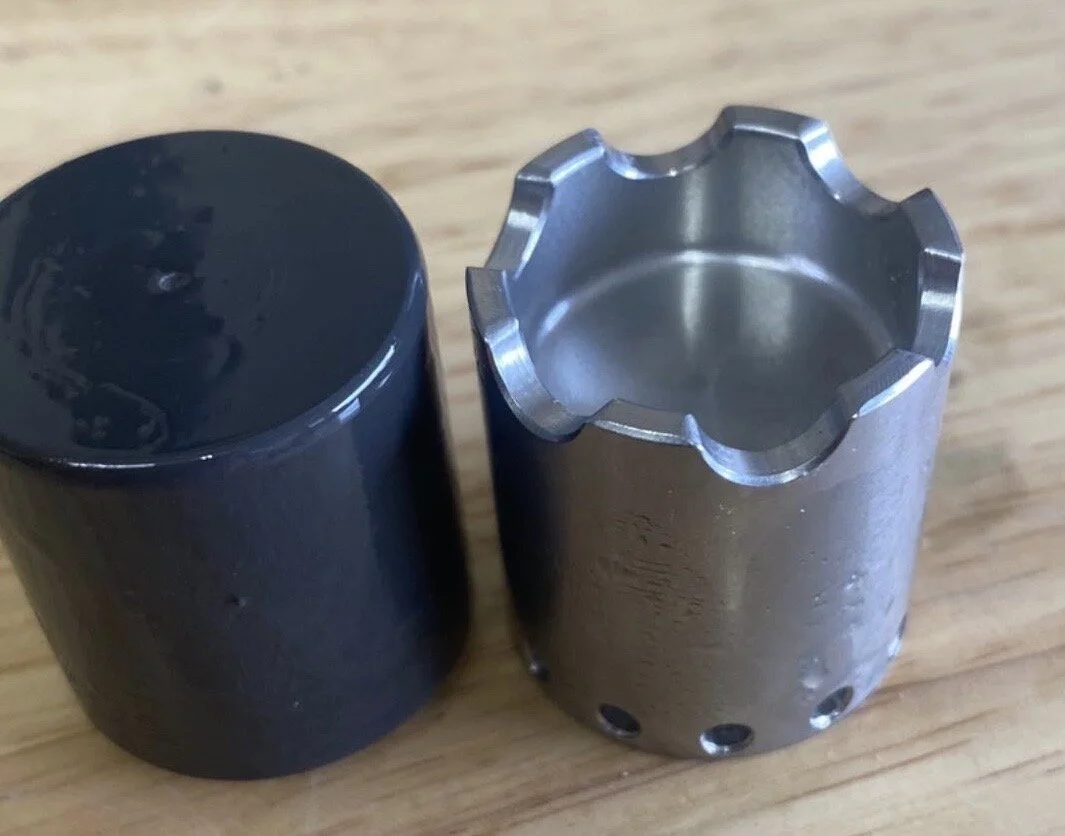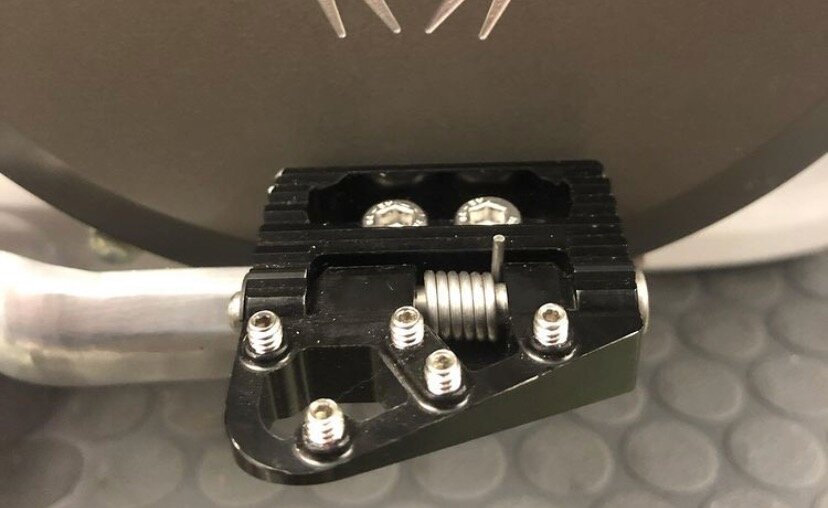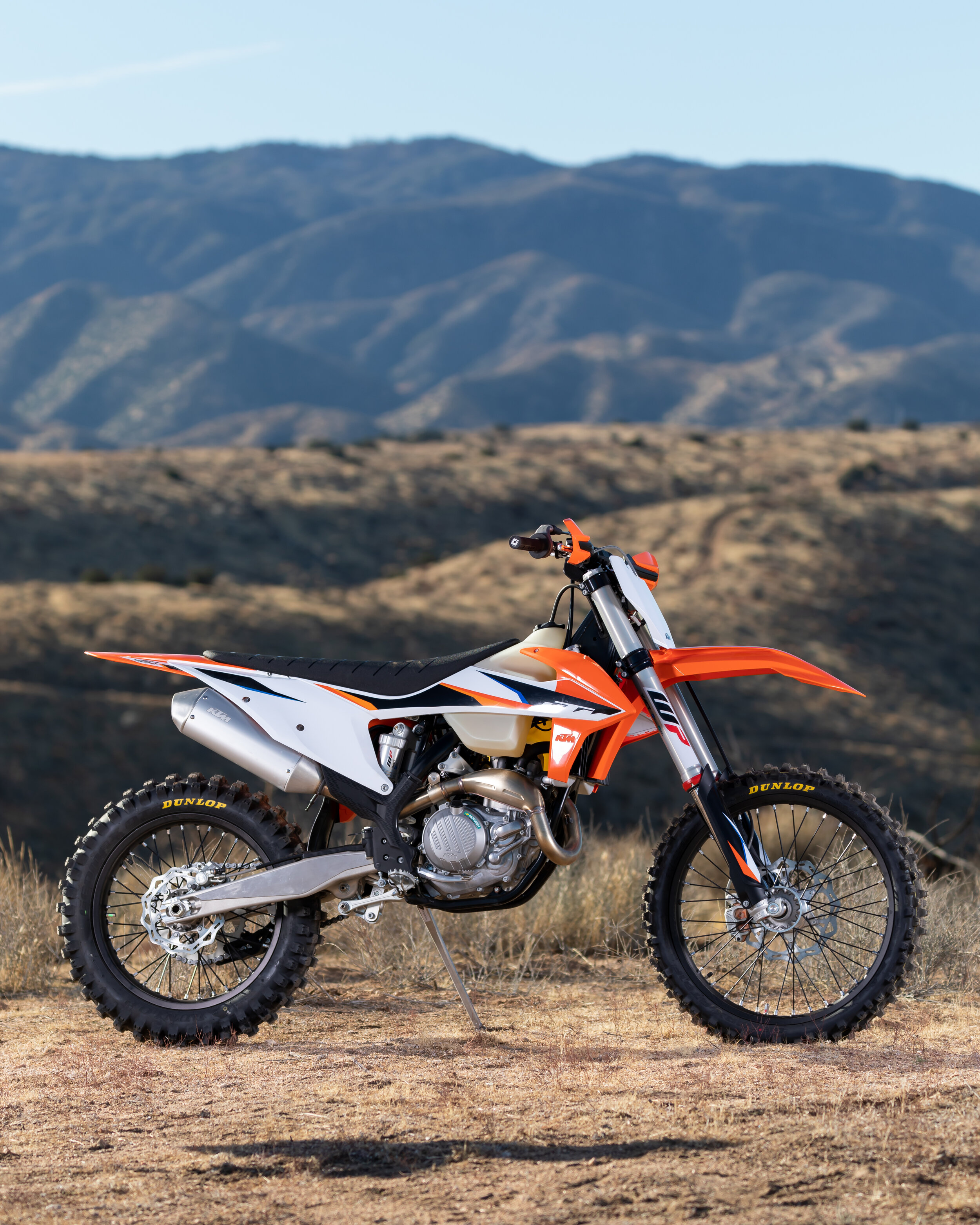The Husqvarna FC450 is unchanged for 2022 besides some Brembo pieces that replaced the Magura ones (clutch/slave cylinder). The FC450 is one of the friendliest bikes in this class to ride, but to me needs to wake up a little down low to make this white stallion feel lighter. Sometimes what is on paper is not what is felt on the track so try these mods below to get some added power and comfort out of your FC450!
Suspension: The factory fork and shock settings are soft for the average sized 450 rider (180 pounds) on the 2022 FC450 so we did go a little bit stiffer on air pressure and softer on compression settings, but have found improved results in comfort, not just performance. All three test riders (155, 170, 195 pounds) that tried this setting agreed that the bike/chassis was calmer on acceleration and de-cel bumps. This setting will give the Husqvarna better hold up as well as help the overall balance of the bike from feeling stinkbug coming into corners. Our 195 pound rider preferred a 48N/m shock spring with the recommended shock settings below.
Fork:
Air Pressure: 10.9 bar
Compression: 14-15 out
Rebound: 11 out
Fork Height: 5mm
Shock:
L/S Compression: 11-12 clicks out
H/S Compression: 1-3/4 turns out
Rebound: 12 clicks out
Sag: 104-105mm
Shock: (195 pounds and over)
Spring Rate: 48N/m
L/S Compression: 14 clicks out
H/S Compression: 2 turns out
Rebound: 13 clicks out
Sag: 104-105mm
Rider Triangle: The standard Pro Taper handlebar that comes on the FC450 is low and flat, but fits the Husqvarna’s cockpit very well for most. I did want more height from my bar when I stood up, so I went with a Pro Taper Race Team bend and this helped me get over the front of the bike more when standing. The Race Team bar worked well for riders from 5’8 to 6’1. The Race Team bend comes in a crossbar or crossbar-less style and is (W)810 (H)91 (R)49 (S)52. If you’re looking for a better stand up feel from your Husqvarna look for handlebar close to this measurement. If you do like the stock bar try cutting the bar down to 805mm instead of the longer/standard 811mm. This will help you corner.
ECU Settings: The 2022 FC450 has a locked ECU box so getting inside to remap is not going to happen like it did two years ago. The good news is that the ECU is much cleaner and should NOT need to be remapped unless you need more power. In that case, you will need to go to a Vortex ECU mapped by Jamie at Twisted or Chad at XPR. Those are my two go to gentlemen to make usable power. Sure there are others out there, but these two guys made the most out of every Autrian bike that I have tested. If you are on a stock ECU, map 2 is my preferred standard map in most conditions as it comes on a little sooner and pulls slightly harder than map 1.
Gearing: The 2022 FC450 comes with a 13/49 gearing ratio. This gearing should be just fine for most tracks, but if you want a little more mid range engine recovery and free-er feeling shock on acceleration, a 14/52 gearing ratio works well. The 14/52 gearing will require a new chain length and I usually go with this gearing when riding tracks similar to Glen Helen (aka faster choppy tracks) to settle the rear end under load.
Chassis: Aftermarket engine mounts are all the rage right now and some of you may not have the money to spend on a pair of engine mounts for your Husqvarna. I will say that I don’t feel like the Husqvarna’s chassis is stiff, but I have heard from other lighter riders that it can be at times, so I decided to play around with torque specs and came up with a 28Nm setting on each bolt for both engine hangers. This band aid will give you a more planted sensation when on throttle while leaning the FC450 through sweepers and fast straights. You will have to make sure that all engine mount bolts have blue Loctite to ensure they do not back out. You can also try torquing your swingarm pivot bolt to 95 Nm (instead of 100Nm) to help rear end traction out of corners. The downside to doing these mods is that the chassis will flex a little more, so if you’re riding deep tilled tracks this modification may be too “flexy” for some (especially when chopping throttle).
Rear Axle Block Kit: Going to a Works Connection axle block kit or Ride Engineering axle block kit will get rid of the fixed left axle block on the stock Husqvarna’s axle. This will help the rear end to move more freely under throttle and improve the shock’s comfort on acceleration chop. Rear wheel placement isn’t as crucial on the Husqvarna as it is on some other 450’s we have tested so if your rear wheel placement is somewhere in the middle of the axle block marks, that will be sufficient for these recommended suspension settings.
TD Exhaust Flange: The Twisted Development exhaust flanges are shaped differently than the stock OEM flange, which can change the engine character of the KTM 450 SX-F. I went through several during testing and found out a size/shape that can actually enhance the low to mid range power character. Compared to the stock piece the TD Performance flange will give you better throttle response through area 2-3 (mid to exit) of corners. Another advantage to me is that the TD flange helps pulling power out of corners as well and helps third gear lugability. The TD flange just helps the RPM’s pick up quicker, which in turn makes the KTM feel lighter when the track gets bumpy. There is no need to remap your ECU and it takes minutes to install.
FMF 4.1 Muffler System: To me, FMF makes one of the best muffler systems for the FC450. There are some other companies that have other bikes dialed in more, but on the Husqvarna/KTM side, FMF has got it down. You will get more low to mid RPM response as well as more mid range pulling power. Top end is increased plus the over-rev is as good as stock. It is one of the few times that I was impressed because it was actually better than stock in almost all areas. The downside is that you must keep up on muffler packing (every 10-12 engine hours) because the FMF will blow out and that could damage your expensive titanium can. Did I mention that you will lose almost two pounds with this system? If you slap on spring forks you will be gaining almost three pounds. You can get most of that back down with a 4.1 Titanium FMF Muffler system.

